The Nuclear Thermal Rocket That Could Get Us to Mars in Just 45 Days
The path to higher thrust propulsion starts here.

- NASA has hired Lockheed Martin to design, build, and test a nuclear-powered rocket for space travel.
- The technology could speed up a manned trip to Mars from the current seven-month minimum to as few as 45 days.
- A nuclear fission reactor would power the rocket’s engine for nuclear propulsion.
NASA and the U.S. Department of Defense’s Defense Advanced Research Projects Agency (DARPA) contracted Lockheed Martin to design, build, and test nuclear thermal rocket technology for a shorter, faster trip to the Red Planet. The rocket is also expected to operate with twice the efficiency as conventional chemical rockets, which combine fuel and an oxidizer for combustion power.
“Working with DARPA and companies across the commercial space industry will enable us to accelerate the technology development we need to send humans to Mars,” Pam Melroy, NASA deputy administrator, says in a statement . “This demonstration will be a crucial step in meeting our Moon-to-Mars objectives for crew transportation into deep space.”
Lockheed Martin will lead spacecraft design, integration, and testing of the roughly $500 million project, and BWX Technologies will design and build the nuclear fission reactor to power the engine.
Tabitha Dodson, DARPA program manager for the project, says in a statement that the DRACO project (Demonstration Rocket for Agile Cislunar Operations) “aims to give the nation leap-ahead propulsion capability.”
A nuclear thermal rocket could achieve high thrust—much like chemical propulsion—but is up to three times more efficient. This means that instead of the seven month-minimum it now takes to get to Mars , a nuclear-powered trip would only take 45 days . And going to Mars in 45 days isn’t the only benefit, as NASA is also looking for an efficient Earth-to-Moon connection.
“In order for our country, for our species, to further explore space, we need changes in more efficient propulsion,” Kirk Shireman, Lockheed Martin’s vice president for lunar exploration campaign, said in a press conference, according to the Washington Post . “Higher thrust propulsion is really, really important. And I think we’re on the cusp of that here.”
The United States started down the nuclear rocket path in the 1950s, but the idea was scraped during a 1970s budget cut. The DRACO program aims to build on that early research, but with a new fuel option for fewer logistical hurdles. Using a high-assay, low-enriched uranium fuel, the fission -based reactor can split apart atoms, heat up liquid hydrogen, and shoot that high-temperature gas through an engine nozzle for the needed thrust.
The greater efficiency from a nuclear thermal rocket not only slashes transit time, but also reduces astronaut risks and cuts down on payload needs for both supplies and systems.
One challenge yet to be overcome, according to Live Science , is the need to heat the hydrogen to 4,400°F while also storing it a minus-420°F. “This is just as much a demonstration of on-orbit storage of cryogenic liquid hydrogen as it is a demo of the nuclear thermal rocket,” Dodson says.
In the hoped-for 2027 test launch, the engine’s fission reactor will stay turned off—for obvious safety reasons—until the rocket reaches its designated orbit. The U.S. Space Force will provide a launch vehicle to take the test vessel into space.
The initial DRACO test plans to send the craft at least 435 miles and no more than 1,240 miles into space. It has no planned maneuvers, and will instead allow the vehicle’s reactor to use the new fuel and collect data along the way. With a planned two months of liquid hydrogen stored on the craft, crews may also test, according to Space News , the possibility of an in-space refueling.
“We’re going to put this together,” Shireman told reporters, according to Live Science , “we’re going to fly this demonstration, gather a bunch of great data and really, we believe, usher in a new age for the United States [and] humankind, to support our space exploration mission.”
Tim Newcomb is a journalist based in the Pacific Northwest. He covers stadiums, sneakers, gear, infrastructure, and more for a variety of publications, including Popular Mechanics. His favorite interviews have included sit-downs with Roger Federer in Switzerland, Kobe Bryant in Los Angeles, and Tinker Hatfield in Portland.


.css-cuqpxl:before{padding-right:0.3125rem;content:'//';display:inline;} Moon and Mars .css-xtujxj:before{padding-left:0.3125rem;content:'//';display:inline;}

The Earth May Have Once Had Multiple Moons

NASA Finds Evidence of Past Martian Microbial Life

This Extreme Moss Could Grow on Mars

There are Lava Tubes on the Moon
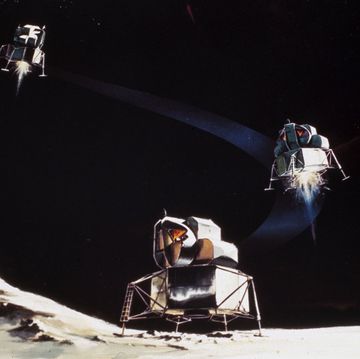
20 Facts You Didn’t Know About Apollo 11

Could This Hole Be Humanity’s Martian Home?
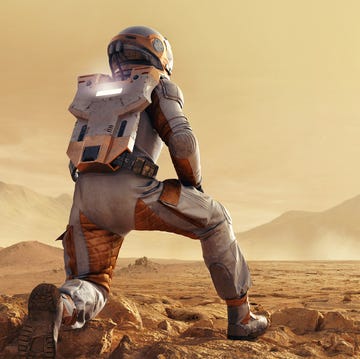
NASA Puts More Money Behind Sci-Fi Plasma Rocket
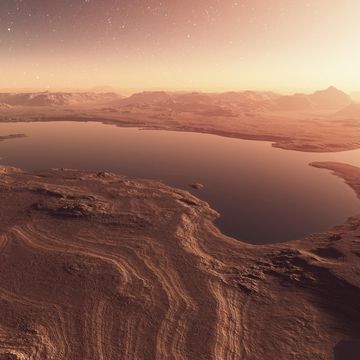
Curiosity Finds Evidence of Mars’ Earth-Like Past

An Unsettling New Image Shows ‘Spiders’ on Mars
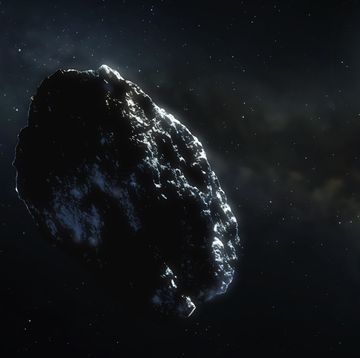
Human-Made Space Debris Could Crash on Mars

How to View the Solar Eclipse
Nuclear Thermal Propulsion Systems
Leading research, testing and analysis to support the development of nuclear thermal propulsion for spacecraft and vehicles.
What is Nuclear Thermal Propulsion?
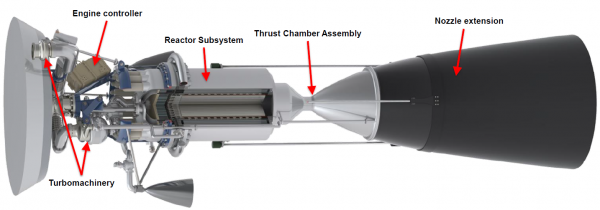
Typically when the term “Nuclear Thermal Propulsion” (or NTP) is used, it is in reference to in-space propulsion systems that rely upon a low molecular weight (typically hydrogen) fuel that flows through a reactor to generate heat due to the nuclear fission processes and eventual thrust.
A low molecular weight propellant is desirable because for a given chamber temperature, the lower the molecular weight, the higher the resulting I SP (or Specific Impulse, a measure of rocket engine efficiency); e.g., H2 provides ~900 seconds I SP at a fuel temperature of ~2800K, while comparably using H2O in an NTP system would only result in ~375 seconds I SP at the same temperatures.
To maintain hydrogen in the liquid state, the hydrogen fuel must be stored at temperatures well below the normal freezing point of water (20K), and at those temperatures, they are considered “Cryogenic” propellants. This is different from “Electric Propulsion” where electric or magnetic fields are used to accelerate propellants (typically gases), or “Solid Propulsion” where a solid fuel/oxidizer blend is burned. Related to Nuclear Thermal Propulsion is Chemical Propulsion .
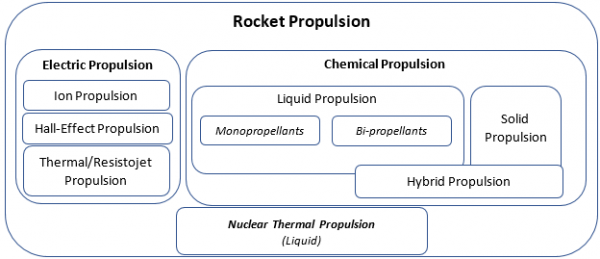
Description of the Nuclear Fission Process
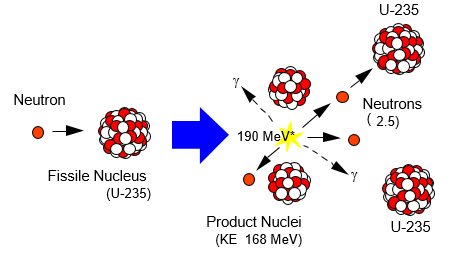
To generate the heat and thrust for a thermal propulsion system like NTP, a source of energy is needed. In an NTP system, that heat is generated by flowing hydrogen through a reactor that is enriched with the fissile nucleus Uranium-235 in order to achieve fission. During the past NERVA Rover NTP development, highly enriched uranium (HEU) was used in order to achieve fission.
Current NTP designs are using low enriched uranium (LEU) or high-assay low enriched uranium (HALEU) for non-proliferation and security considerations while still achieving fission. The fission process occurs because incident neutrons are “absorbed” in a fissile nucleus, and an excited state is produced. This excited state makes the nucleus very unstable, and if the compounded nucleus is excited enough, a fission of the nucleus occurs (or splitting). When this fission occurs, new product nuclei (such as Sr-90 or Cs-137) are created such as illustrated in Figure 3 above as well as gamma rays, an average of ~2.5 neutrons, and a release of total energy averaging ~190 MeV to ~200 MeV (depending on the fission fragments, delayed/prompt particles and their kinetic energies).
This 190 MeV (megaelectronvolts) release of energy is what is utilized in the reactor to heat the hydrogen flowing through the reactor. If sufficient production of neutrons is achieved and they are moderated (or slowed) to the incident energies needed to achieve fission, as well as a sufficient enrichment of Uranium-235 in the reactor core, a nuclear chain reaction can be sustained and the resulting thrust due to this nuclear chain reaction will be maintained.
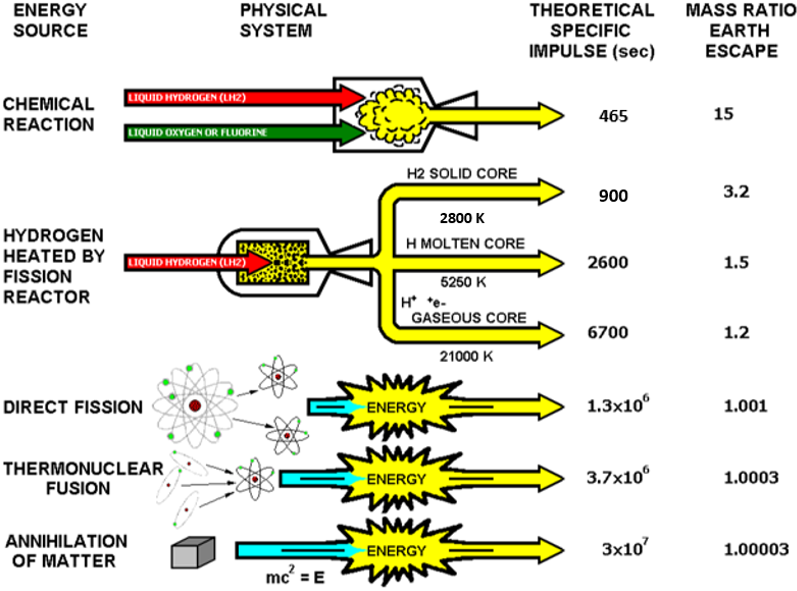
As seen in the above Figure 4, today’s best chemical propulsion systems can achieve I SP s of ~465 seconds, while NTP can achieve almost two times the I SP of ~900 seconds. In addition to the high I SP compared to other propulsion systems, NTP has an additional benefit of having a high thrust (10-15 klbf) to weight ratio so it dramatically reduces IMLEO (Initial Mass in Low Earth Orbit), the required number of SLS (Artemis’ Space Launch System) launches and enables “affordable Mars Missions” not possible using other propulsion options.
NTP will enable a much shorter round trip opposition-class Mars mission, or short “1-way” transit times (~4-6 months) to and from Mars using fast conjunction-class missions. Due to these shorter transit times, there is a significant reduction in crew exposure to space radiation and the debilitating physical effects of prolonged exposure to a zero-g environment (e.g., muscle and bone loss and visual impairment due to intracranial pressure).
The use of an NTP system allows vehicle reusability and component commonality (reduces development and recurring costs); also allows artificial gravity operation and increased abort capability. If an NTP system is used individually or in a clustered arrangement, it allows many other mission applications (e.g., reusable lunar cargo delivery, crewed lunar landing missions, crewed asteroid missions, a high energy injection stage for shortened robotic science missions to the outer planets) – can allow a “one size fits all” approach to engine development.
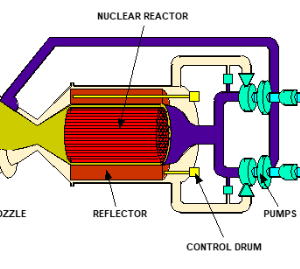
Components of a Nuclear Thermal Propulsion System
Hydrogen is stored at cryogenic temperatures (20 K) to maintain the propellant in a liquid state by Cryogenic Fluid Management Systems. Includes plumbing, valves, filters, and fluid management devices needed to ensure the propellant is adequately delivered to the reactor at the right conditions. The Turbopump includes turbomachinery/pumps needed to help push and condition the … Read the rest ⇢
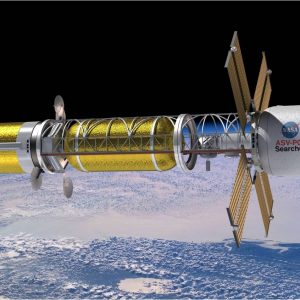
Capabilities & Technology
Multiphysics analysis of the reactor (FEA/CFD/MCNP) combines neutronics, fluid, thermal, and structural simulations all coupled together, which captures design subtleties otherwise not seen without coupling the simulations. Numerical Propulsion System Simulation (NPSS) is an object-oriented, non-linear code originally developed at GRC in 1995 and is used to model full engine systems and integrate model details … Read the rest ⇢
Related Reading and Additional Images
Kilopower – A Fission Surface Power GRC led project
Project Rover and NERVA Programs – Historical Glenn Rockets Systems Areas
History of Nuclear Propulsion (air- and space-craft) – NESC Academy Video
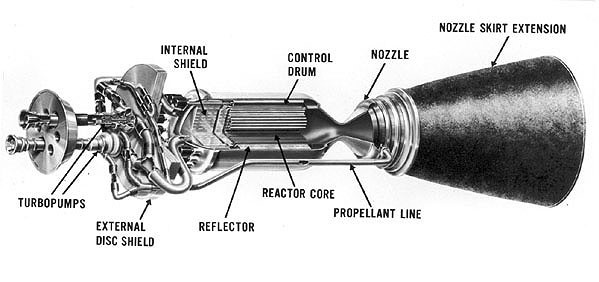
For further reading on historical Rover/NERVA development at NASA see NTRS report “N92-11091” by S.K. Borowski
Useful Links
STMD (GCD) Nuclear Thermal Propulsion Video – An overview of a previous NTP program
Rocket Propulsion – An overview of rocket propulsion K-12
Artemis Program – NASA’s new lunar exploration program, which includes sending the first woman and the next man to land on the Moon. Through the Artemis program, NASA will use new technology to study the Moon in new and better ways, and prepare for human missions to Mars.
For further reading into the history of NTP development at GRC and various considerations that were made during development – see the following:
Special Publications
The following list of NASA Special Publications (SP) provides design guidance for a number of rocket propulsion components and systems. Although somewhat dated (1970’s), much of the design guidance is still used in modern applications and developments.
Thanks for contacting us! We will get in touch with you shortly.
NASA, DOE fund three nuclear thermal space propulsion concepts
The 12-month contracts are worth up to $5 million apiece.

Nuclear-powered spaceships for fast trips to Mars may now be one step closer to reality.
NASA and the U.S. Department of Energy (DOE) have teamed up to fund three design concepts for reactors that could become part of a nuclear thermal propulsion system , a next-generation technology that could make the exploration of deep space faster and more efficient.
For example, a spacecraft powered by a nuclear thermal rocket could potentially get to Mars in just three to four months , experts say — about half the time required using traditional chemical rockets.
Related: Superfast spacecraft propulsion concepts (images)
"By working together, across government and with industry, the United States is advancing space nuclear propulsion," Jim Reuter, associate administrator for NASA's Space Technology Mission Directorate, said in a statement . "These design contracts are an important step towards tangible reactor hardware that could one day propel new missions and exciting discoveries."
The newly announced contracts will be awarded through the Idaho National Laboratory (INL), the DOE's chief site for nuclear energy research. Each contract is worth up to $5 million. The money will fund 12 months of development work, which will culminate in the production of a reactor design concept. INL experts will evaluate those concepts, then provide recommendations to NASA about how to proceed, agency officials said.
The three companies that received contracts are Virginia-based BWX Technologies, Inc., which will work with Lockheed Martin on the project; General Atomics Electromagnetic Systems of San Diego, which will partner with X-energy LLC and Aerojet Rocketdyne; and Seattle-based Ultra Safe Nuclear Technologies, whose partners are Ultra Safe Nuclear Corporation, Blue Origin , General Electric Hitachi Nuclear Energy, General Electric Research, Framatome and Materion.
Get the Space.com Newsletter
Breaking space news, the latest updates on rocket launches, skywatching events and more!
Nuclear energy has powered spacecraft almost from the dawn of the space age, helping robots such as NASA's Curiosity and Perseverance rovers on Mars, Cassini Saturn probe and twin Voyager craft do their pioneering work.
That type of nuclear tech harnesses the heat generated by the radioactive decay of plutonium-238, converting it to electricity that powers scientific instruments and other gear. Nuclear thermal propulsion systems are something different entirely. They would transfer the heat generated by a nuclear reactor to a liquid propellant such as hydrogen, which would then transition to the gas phase, expand and be funneled through a nozzle, creating thrust.
Nuclear thermal propulsion systems would feature higher thrust and twice the propellant efficiency of traditional chemical rockets, NASA officials have said. Those advantages are quite appealing to the space agency, which is working to send astronauts to Mars in the 2030s and wants to minimize travel time to and from the Red Planet.
Nuclear reactors could also help humanity set up shop on other worlds after they get there. For example, NASA is working on a fission power system for use on the moon and Mars .
"NASA intends to partner with the DOE and INL to release a request for proposals that asks industry for preliminary designs of a 10-kilowatt class system that NASA could demonstrate on the lunar surface," agency officials wrote in the statement. "Maturing fission surface power can also help inform nuclear electric propulsion systems, another candidate propulsion technology for distant destinations."
Mike Wall is the author of " Out There " (Grand Central Publishing, 2018; illustrated by Karl Tate), a book about the search for alien life. Follow him on Twitter @michaeldwall. Follow us on Twitter @Spacedotcom or Facebook.
Join our Space Forums to keep talking space on the latest missions, night sky and more! And if you have a news tip, correction or comment, let us know at: [email protected].
Michael Wall is a Senior Space Writer with Space.com and joined the team in 2010. He primarily covers exoplanets, spaceflight and military space, but has been known to dabble in the space art beat. His book about the search for alien life, "Out There," was published on Nov. 13, 2018. Before becoming a science writer, Michael worked as a herpetologist and wildlife biologist. He has a Ph.D. in evolutionary biology from the University of Sydney, Australia, a bachelor's degree from the University of Arizona, and a graduate certificate in science writing from the University of California, Santa Cruz. To find out what his latest project is, you can follow Michael on Twitter.
Space mining startup AstroForge aims to launch historic asteroid-landing mission in 2025
Lego Technic planet earth and moon in orbit review
Quantum data beamed alongside 'classical data' in the same fiber-optic connection for the 1st time
Most Popular
- 2 SpaceX's private Polaris Dawn mission will set altitude record for female astronauts
- 3 This Week In Space podcast: Episode 125 — Back to Space School 2024
- 4 What happens when your warp drive fails? Scientists have the answer
- 5 Supermassive black holes have masses of more than a million suns – but their growth has slowed as the universe aged
Interstellar Travel: Magnetic Fusion Plasma Engines Could Carry Us Across the Solar System and Beyond
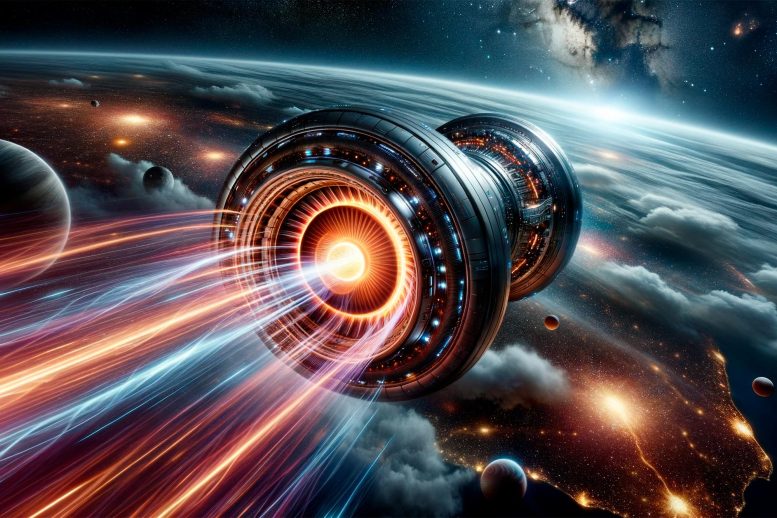
Florian Neukart introduces the Magnetic Fusion Plasma Drive, a revolutionary propulsion method combining fusion and ionic techniques. Offering immense energy density and numerous advantages, it could redefine space exploration, although challenges in sustaining fusion reactions in space remain.
Missions to the Moon, missions to Mars , robotic explorers to the outer Solar System, a mission to the nearest star, and maybe even a spacecraft to catch up to interstellar objects passing through our system. If you think this sounds like a description of the coming age of space exploration, then you’d be correct! At this moment, there are multiple plans and proposals for missions that will send astronauts and/or probes to all of these destinations to conduct some of the most lucrative scientific research ever performed. Naturally, these mission profiles raise all kinds of challenges, not the least of which is propulsion.
Simply put, humanity is reaching the limits of what conventional (chemical) propulsion can do. To send missions to Mars and other deep space destinations, advanced propulsion technologies are required that offer high acceleration (delta-v), specific impulse ( I sp ), and fuel efficiency. In a recent paper, Leiden Professor Florian Neukart proposes how future missions could rely on a novel propulsion concept known as the Magnetic Fusion Plasma Drive (MFPD). This device combines aspects of different propulsion methods to create a system that offers high energy density and fuel efficiency significantly greater than conventional methods.
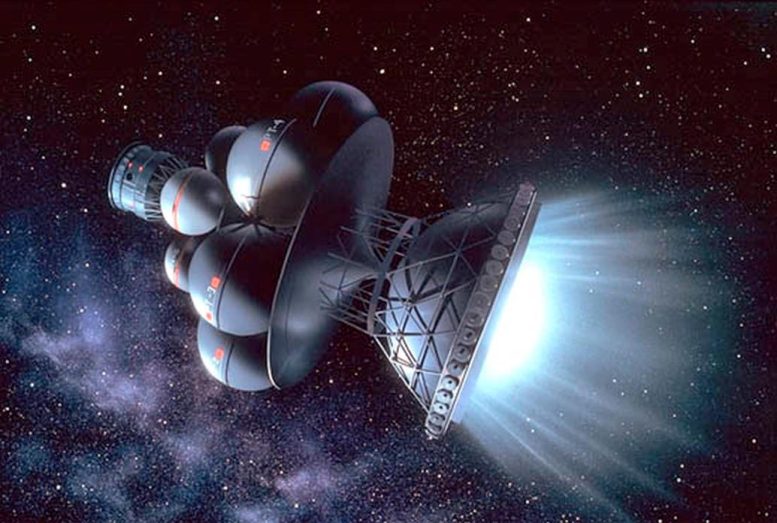
Florian Neukart is an Assistant Professor with the Leiden Institute of Advanced Computer Science (LIACS) at Leiden University and a Board Member of the Swiss quantum technology developer Terra Quantum AG . The preprint of his paper recently appeared online and is being reviewed for publication in Elsevier .
Why the Need for Advanced Propulsion?
According to Neukart, technologies that can surmount conventional chemical propulsion (CCP) are paramount in the present era of space exploration. In particular, these technologies must offer greater energy efficiency, thrust, and capability for long-duration missions.
This is especially true for missions to Mars and other locations beyond the Earth-Moon system, which pose serious risks to astronaut health, safety, and well-being. Even when Earth and Mars are at their closest every 26 months (a Mars Opposition ), it can take up to 9 months to make a one-way transit to the planet. Combined with surface operations that could last up to a year and the nine-month return trip, missions to Mars could last up to 900 days! During this time, astronauts will be exposed to elevated levels of cosmic and solar radiation, not to mention the toll of long periods spent in microgravity will have on their bodies.
Hence, NASA and other space agencies are actively investigating alternate means of propulsion. As noted in a previous article, “ How Long Would It Take To Travel To The Nearest Star? ,” these concepts are also considered potential means for achieving interstellar travel for decades. They include fuel-efficient concepts like electric or ion propulsion, which utilize electromagnetic fields to ionize inert propellant (like xenon gas) and accelerate it through nozzles to generate thrust. However, these concepts generally produce low thrust and must rely on heavy power sources (solar arrays or nuclear reactors) to generate more.
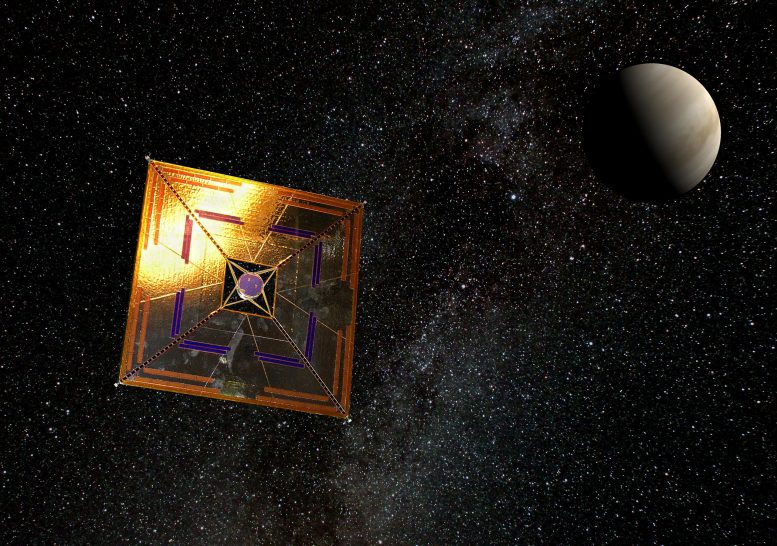
Solar Sails are another option, which can generate continuous acceleration while requiring no propellant (thereby saving on mass). However, missions equipped with this technology are limited in terms of thrust and must operate closer to the Sun. A twist on the idea is to employ Gigawatt-energy (GWe) laser arrays to accelerate spacecraft equipped with sails to relativistic speeds (a fraction of the speed of light). However, this concept requires expensive infrastructure and tremendous amounts of power in order to be feasible.
Nuclear and Fusion Propulsion
Another popular concept is nuclear thermal propulsion (NTP), which NASA and DARPA are currently developing in the form of the Demonstration Rocket for Agile Cislunar Operations (DRACO). This method relies on a nuclear reactor to heat propellant (like liquid hydrogen), causing it to expand through nozzles to generate thrust. The benefits of NTP include very high energy density and significant acceleration, but it also comes with numerous technical and safety challenges involving the handling and launching of nuclear materials.
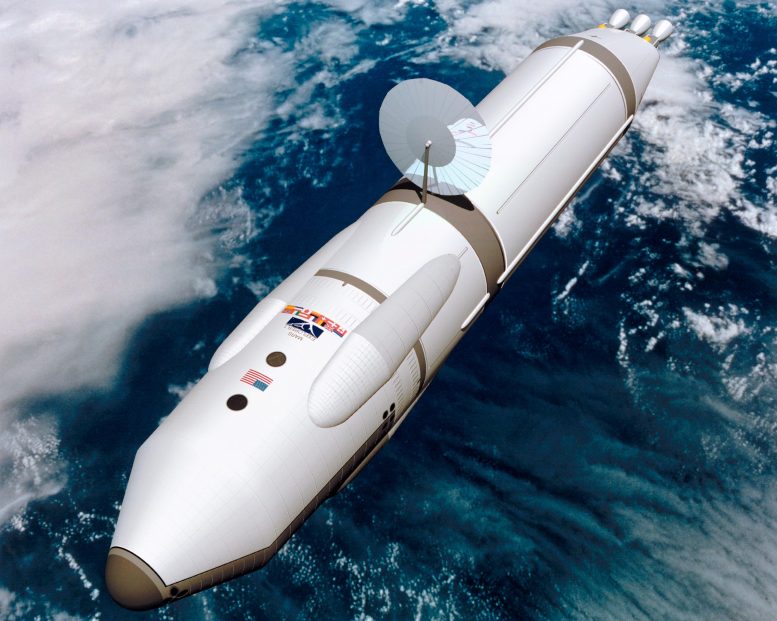
There are also propulsion concepts that harness fusion reactions, like Deuterium-Tritium (D-T) and Deuterium-Helium three (D-He3) reactions, something that theoretical scientists have been working with for decades. These methods offer the potential for high thrust and extremely high specific impulse but also present technical challenges, not the least of which are related to handling the necessary fuel and achieving sustained and controlled fusion reactions. There are also more exotic concepts, like antimatter propulsion and the Alcubierre Warp Drive, but none of these will be available in the foreseeable future.
Neukart’s Revolutionary Concept
And there’s Neukart’s proposal, which combines elements of fusion propulsion, ionic propulsion, and other concepts. As he explained to Universe Today via email:
“The MFPD is a propulsion system for space exploration, utilizing controlled nuclear fusion reactions as a primary energy source for both thrust and potential electric power generation. The system is predicated on harnessing the immense energy output from fusion reactions, typically involving isotopes of hydrogen or helium, to produce a high-velocity exhaust of particles, thereby generating thrust according to Newton’s third law.
“The plasma from the fusion reactions is confined and manipulated using magnetic fields, ensuring controlled energy release and directionality. Simultaneously, the MFPD concept envisages the possibility of converting part of the fusion energy into electrical power to sustain onboard systems and possibly the reaction control system of the spacecraft.”
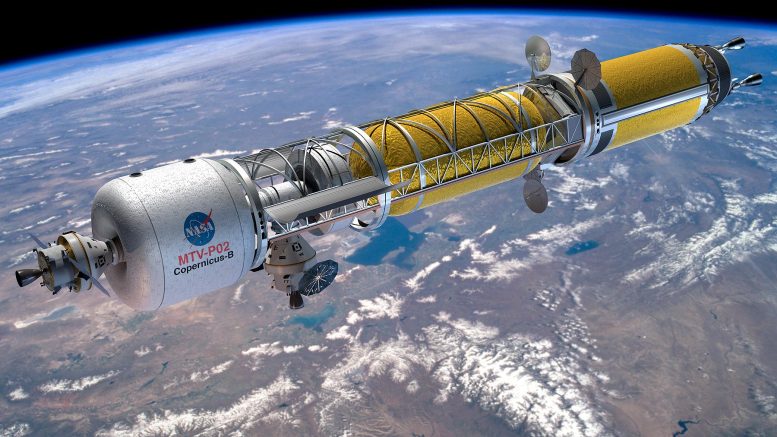
To develop this concept, Nuekart began with deuterium-tritium (D-T) fusion reactions since it is one of the most researched and understood reactions and offers a clear and familiar basis for elaborating the core principles and mechanics of MFPD. Furthermore, Neukart added, D-T reactions have relatively low ignition temperatures and a higher cross-section than other concepts, making it a good “starting point.” Therefore, they provide a useful benchmark for measuring and comparing the performance of this theoretical propulsion system.
However, the ultimate goal of MFPD is to harness aneutronic fusion (p-B11), where very little of the energy released by the reactions is carried by neutrons. Aneutronic reactions, in contrast, release energy in the form of charged particles (typically protons or alpha particles), thereby significantly reducing the level of neutron radiation produced.
Advantages of MFPD
The advantages of this system are immediately apparent, combining high specific impulse and immense energy density and providing both thrust and power from a single energy source. Other benefits, said Neukert, include the following:
- High Specific Impulse: The MFPD can provide a high-specific impulse, delivering substantial velocity change (delta-v) to the spacecraft, facilitating missions to distant celestial bodies.
- Energy-Dense Fuel: Fusion fuel, like isotopes of hydrogen, is incredibly energy-dense, potentially enabling extended missions without needing vast amounts of propellant.
- Lower Mass Fractions: The spacecraft might be designed with lower mass fractions dedicated to fuel storage, affording more mass allocation for scientific instruments or additional technologies.
- Dual Utility: The MFPD is not just a propulsion system; it is also envisioned to provide electrical power for the spacecraft’s systems and instruments, which is crucial for long-duration missions.
- Adaptability: The potential to adjust the thrust and specific impulse, offering versatility for different mission phases, such as acceleration, cruising, and deceleration.
- Reduced Travel Time: The potential for higher continuous thrust may significantly reduce transit times to distant destinations, mitigating risks related to cosmic radiation exposure and onboard resource management.
- Radiation Shielding: Although challenging, the inherent magnetic and physical structures might be engineered to provide some level of radiation shielding for the spacecraft and crew, utilizing the plasma and magnetic fields.
- Independence from Solar Proximity: Unlike solar sails or solar electric propulsion, the MFPD does not depend on proximity to the Sun; thus, it is viable for missions into the outer solar system and beyond.
- Minimized Risk of Nuclear Contamination: Compared to nuclear-thermal or fission-electric concepts, the MFPD could be designed to minimize the risk of radioactive contamination, given that fusion, in general, requires less radioactive material and potentially allows for safer reactor shutdown.
Implications and Challenges
As to the implications this system could have for space exploration, Nuekart emphasized the ability to traverse vast cosmic distances in reduced timeframes, expanding mission profiles (fast transits to other planets in the Solar System and interstellar missions), mitigating the risks of long-duration space missions (exposure to radiation and microgravity), revolutionizing spacecraft design by providing propulsion and electrical power simultaneously, and enhancing human exploration capabilities.
Beyond that, he also foresees the potential for technological spin-offs in materials science, plasma physics, and energy production that could have applications here on Earth. The development of this system could also foster international collaborations, bringing experts and resources from multiple fields together to realize common exploratory objectives.
Of course, no next-generation technology proposal would be complete without some caveats and addendums. For instance, said Nuekart, the main challenge for MFPD propulsion lies in achieving and maintaining stable fusion relations in space. On Earth, researchers have made considerable progress with magnetic confinement (MCF) and inertial confinement fusion (ICF). The former involves Tokamok reactors using magnetic fields to confine fusion in the form of plasma, while the latter relies on lasers to compress and heat tablets of D-T fuel.
However, similar experiments have not been conducted in space, leading to questions about how the system will handle heat caused by reactions, the resulting radiation, and the structural implications for spacecraft. Nevertheless, the ball is already rolling on nuclear tests in space (the aforementioned DRACO demonstrator). Given the benefits of fusion propulsion, it’s not likely to remain on the drawing board for long. Ultimately, says Nuekart, the research into MFPD aims to establish a pathway that will lead to interplanetary and (someday) Interstellar exploration:
“While the journey to realize the MFPD concept will undeniably be layered with challenges and scientific hurdles, the potential payoff is monumental. Achieving reliable, effective, and efficient fusion propulsion could redefine the boundaries of achievable goals, propelling humanity into a new era of exploration, discovery, and understanding of the cosmos. The hope is that the research seeds curiosity, innovation, and determination among scientists, engineers, and explorers across the globe, charting the course toward our future among the stars.”
Adapted from an article originally published on Universe Today .
Reference: “Magnetic Fusion Plasma Drive” by Florian Neukart, 20 September 2023, Physics > General Physics . arXiv:2309.11524
Related Articles
The puzzle of an eternally-existing, self-reproducing, and inflationary universe, grail probes now orbiting the moon, sofia looking deep into the orion nebula, nasa probe takes close-up photos of giant vesta asteroid, comet survives after close brush with the sun, two largest black holes ever discovered, 3d video offers a tour over asteroid vesta, astronomers discover 18 new planets, nasa curiosity heads to mars, 15 comments.
What’s the difference between this and a fusion torch drive, which scientists have been discussing since at least the late 1960s?
An important development to MFPD and other variations would be to accelerate ionized plasma to relativistic speeds. This could be done by designing the craft to essentially being a particle accelerator in space. Generate ionized plasma, accelerate using magnetized array to near light speeds, then controlled release into space for propulsion. Configurations could be large rings (plasma in both clockwise and counter directions to equalize thrust), tighter helical cylinders, or other geometries that allow continuous and repeated acceleration of plasma. This may be why UAP (UFOs) are saucer or cylindrical in shape. Warp speed (Cochran) is another matter, but something that would make a Mars run in a day would be pretty cool and useful.
Polonium photonic 210 584004336573921005
Plenty of cool artistic depictions and nothing more. It’s a relief though ’cause mankind really NEEDS to stay grounded on this space rock. Once our filth and our greed and our utter disregard for the balance of nature gets scattered throughout the galaxy, it’ll be the end of the universe. We can’t restrain ourselves from destroying this planet…, how in the world will we exercise restraint when/ if we do succeed in interstellar travel?
We only have hydrogen and oxygen as a propellant. All other ionic propellants are science fiction at best.
Hydrazine, JP4, JP5, hydrogen peroxide and many others have been in use for years. And all of those are chemical reactions which don’t use much of the available energy. A fusion-based drive would kick things up a major notch.
It’s sad that you use DALLE3(AI) to generate your primary content image. Yes, it’s super obvious. It detracts from the credibility of the article and by extension the entire website.
I tend to agree with Alexander H&O are the most conventional propellants available for normal lenght/time movement. UFOs, if real, don’t use these materials, from what we’ve ever seen. They appear to ‘go’ by using field modification controlled by ? Electro-magnetics? and features of the physical world which we’ve only talked about. Things like ‘worm-holes’ or they artist’s depiction of the saucer sliding between the gravitational field lines. I’m sorry, at my advanced age, I cannot help to observe that time and distance are not absolutes. If I’m talking tensor lengths and time being speed depend, well then we are looking for methods for travel enhancement in the wrong intellectual place.
I understood about half of this article but could you use electromagnets for propulsion?
Adjusting the field strength to go faster.
Why are we still not looking in to creating our own magnet field as a shield for a space craft by spinning magnets with mercury..
I think we already have something like this in a black program. I witnessed a very large craft with 6 large ion or plasma engines fly right over my car one night Nov. 21, 2008, just east of Kingman AZ, on I40 near Exit 66 and the Pedco truck stop. Each engine was massive, about the size and shape of a drive-in movie screen. 3 across and 2 rows. They glowed purple blue and white. The haze stretched out behind it at least 50 yards. It seemed to be in trouble, it had sparks dripping from the front and electrical arcing across the bottom. It was only 200 feet or less above my car, based on the details I could see on the bottom and the size of the sparks. I also thought about the angle I was looking up, was like looking at the buildings in Los Angeles from the 110. So about 20 or 30 floors, 200 or 300 feet. I said to myself and laughed, “I hope its one of ours.” I have been looking for clues to how those engines could be made that big, I did see a NASA spokesman talking about stacking small ion engines together to make larger ones, just like they do to make jumbo TV screens for ballparks. Maybe that’s what I saw. A craft in trouble flying low to avoid radar and coming in for repairs. It was the biggest thing I have ever seen in the sky, and I worked on the C-17 in the 80’s. It was much bigger than that. If anyone else has seen anything like this with the glowing engines, pleasae reply.
I wonder about the possibility of multiple people having this information in their brain and not being important enough to be heard on the subject. I have neither the expertise nor the educational background to know any of this, yet I do. I have never known why… This question has plagued me. My design has never been developed publicly. Yet I have this knowledge and my design… of much of what is spoken of in this article. I have received a world of criticism (especially based upon my lack of knowledge in this/these fields… yet I know). I wonder if it’s time to collate all that is known on this field/area of knowledge, in the hope to reveal an answer to the simplest of quedtions: How?
Most of the comments here are wishful thinking but we need to start research in this direction or we’re never going to leave this solar system. As for U.F.O.s, government secrecy leads unwarranted speculation.
SciThechDaily keeps churning up articles about revolutionary inventions, game-changers and disruptors every day. If they all were true, we’d already be out there in the outer space, fighting Klingons.
Excellent literature above! THANK EVERYONE
Save my name, email, and website in this browser for the next time I comment.
Type above and press Enter to search. Press Esc to cancel.
Netflix's 3 Body Problem Reveals a Surprisingly Brilliant Mode of Space Travel
The idea of space travel with parachutes and nuclear explosions will sound plenty familiar to NASA alum.

In 1946, only a year after the explosive and devastating debut of the nuclear age, Polish-American mathematician and physicist Stanislaw Ulam had an idea for a rocket that was so crazy it just might work.
During the war, Ulam worked side-by-side with Robert Oppenheimer and Edward Teller on the creation of the atomic bomb at Los Alamos, and now that peace was achieved, the future of the nuclear age was only just beginning. It was during this moment of possibility while still conducting research at the famous New Mexico facility, that Ulam’s thoughts turned toward the stars: Could the explosive power of the atomic bomb be used for exploration instead of destruction?
In other words, could nuclear bombs somehow become deep-space rocket engines?
“It is a very ambitious but efficient way to undertake space explorations with a vehicle able to travel at high speeds with high payloads and an extremely good ratio of payload to total initial weight,” Ulam wrote in his 1976 memoir Adventures of a Mathematician . “The spaceship could transport hundreds or thousands of people.”

Earthlings want to send a probe light years away to spy on the San-Ti, but need an idea to get there, fast.
Fast-forward to 2024 and Ulam’s nuclear daydreaming is enjoying a renaissance of sorts as the Netflix series The Three-Body Problem , based on a novel by Chinese sci-fi author Liu Cixin, cribs the idea as a fast-and-not-so-easy way to propel a payload to incredible speeds. To achieve this, the characters devise a “radiation sail” to be propelled by a thousand consecutive nuclear explosions in space until the spacecraft reaches a velocity just a notch above 1 percent of lightspeed.
But while the Three-Body Problem uses Ulam’s nuclear rocket for decidedly sci-fi ends, the 80-year-long story of this developing technology, known today as nuclear pulse propulsion (NPP), is very real — and it may still be the future of space exploration.
An Explosive History
Every rocket humanity has ever sent skyward has been powered by chemical fuel, a combination of kerosene, oxygen, and hydrogen, or both, with enough “oomph” to escape Earth’s orbit and reach its otherworldly destination. That’s how the Apollo astronauts landed on the moon, how the Space Shuttle crews built the International Space Station, and how future space explorers will put bootprints on Mars.
But similar to how fission (and especially fusion) represent efficient energy sources of the future, the same can also be said for rocketry. And while the idea of riding the concussive explosions of a nuclear bomb may seem strange, the idea isn’t quite as strange as you might think.
“Your car is a pulsed system because the piston is compressing gas and air together, and then it explodes and pushes the piston apart,” Jason Cassibry, a professor at the Department of Mechanical and Aerospace Engineering at the University of Alabama in Huntsville, tells Inverse . Cassibry is affiliated with the university’s Propulsion Research Center where he recently worked on a pulsed propulsion system similar to magneto-inertial fusion technology. “So every time you explode [a bomb] according to Newton's second law, it would give it an increase in momentum and accelerate it, just like you would driving your car and stepping on the gas.”

NASA’s Project Orion involves a heavy-lift vehicle that used atomic bombs to detonate behind a pusher plate fitted with shock absorbers.
Ulam recognized the beautiful simplicity of a pulsed system, and after mulling over the idea for years, he finally put his thoughts to paper in a classified 1955 report, stating that “the scheme proposed in the present report involves the use of a series of expendable reactors (fission bombs) ejected and detonated at a considerable distance from the vehicle.” Ulam eventually presented the idea to President Eisenhower’s scientific advisor George Kistiakowsky whose “reception of it was not enthusiastic,” Ulam wrote in his memoir.
Despite initial skepticism, the idea eventually gathered steam under the infamous Project Orion , a heavy-lift vehicle concept that used atomic bombs, ranging from a few to several kilotons, to detonate behind a pusher plate fitted with shock absorbers to limit the impact of that initial, explosive acceleration. While many of the early design challenges of the spacecraft were overcome, the project shut down in 1965 due to nuclear treaties that prohibited nuclear explosions in space. Chemical rockets had also become more powerful and were clearly NASA’s preferred chariot to the stars during the Space Race.
But the idea didn't die and several projects carried the NPP flame with names like Project Daedelus , Project Longshot , and Vista . One of the most intriguing ideas was a spacecraft concept known as Medusa that altered the pulsed propulsion design using a lightweight sail (technically a spinnaker) to harness the pressure pulses of subsequent nuclear explosions, a concept that’s extremely similar to the one explored in the Three-Body Problem . Sadly, none of these concepts — including Cassibry’s own Pulsed Fission-Fusion (PuFF) system — ever made it to the launch pad, largely due to technological limitations and lingering concerns over detonating nuclear explosions in space.
“There was a resurrection of Project Orion in the 90s when Clinton was in office, and when they got to the level to talk to some of his staffers…they said ‘no way are we putting nuclear weapons in space,’” Cassibry says. “Now, they’re even more sensitive to it — even though the Cold War is over, there are still concerns.”
Space Travel Goes Nuclear
However, not all nuclear propulsion systems are the same.
While Cassibry worked on pulsed systems, ostensibly the great-grandchild of Ulam’s original vision, other systems include nuclear thermal propulsion (NTP) and nuclear electric propulsion (NEP). While all three are based on nuclear technology, NTP and NEP use more traditional fission systems (i.e. heating up propellant, which turns to gas, and results in propulsion). So unlike NPP, which uses microexplosions for propulsion (much to the chagrin of international nuclear treaties), NTP and NEP systems can’t be weaponized.
While all three technologies use different methods and have various use cases, nuclear propulsion — whether through fission heating or nuclear explosion — has some pretty stark advantages over its chemical competitor.
“There are certain missions to the ice giants — Uranus and Neptune — that could not be done, given all the constraints that you put on a mission that far out, with anything other than nuclear thermal,” Cassibry says. “[NTP] is more straightforward than some of the things we could do…it’s kind of low-hanging fruit in terms of advanced propulsion concepts.”
NASA has taken notice and hopes to test its Demonstration Rocket for Agile Cislunar Operations (DRACO) NTP rocket in 2026. Being three times more efficient than chemical rockets, that means Draco could travel from the Earth to Mars in just 45 days or carry increased cargo loads in a more conventional timeframe. However, Cassibry still believes that nuclear pulse propulsion, using fission, fusion, or a combination of the two, will ultimately outperform even these nuclear-powered spacecraft decades down the road.
“There’s a joke that crushes my soul every time I hear it that fusion is the technology of the future and it always will be,” Cassibry says. “But we started with really, really, really terrible reactors and we’ve been making steady progress…we’ll see fusion propulsion being possible within about 20 to 30 years.”
Whether on a popular Netflix show or in the minds of the leading space propulsion experts, it would seem Ulam’s dream is alive and well.
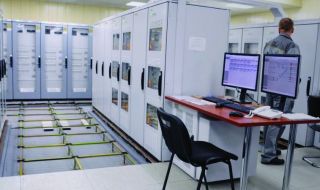
A message from Curtiss-Wright
A Clean Energy Powerhouse: The Digital I&C Systems Modernizing Nuclear
Nuclear Pulse Propulsion: Gateway to the Stars
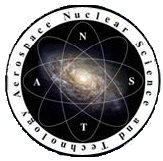
The great astronomer Carl Sagan once said that one cannot travel fast into space without traveling fast into the future. He was, of course, referring to the time dilation effect made manifest by speeds very close to the speed of light, 300,000 km/s. Sagan was also a strong proponent of nuclear power for use in space propulsion systems, in particular nuclear pulse propulsion. He outlined three of these in his award-winning series Cosmos : Project Orion, Project Deadalus, and the Bussard Ramjet.
Nuclear pulse propulsion is a theoretical method of spacecraft propulsion that uses nuclear explosions for thrust. It was first developed as Project Orion by the Defense Advanced Research Projects Agency (DARPA), an agency of the U.S. Department of Defense, after a suggestion by Stanislaw Ulam in 1947. Newer designs using inertial confinement fusion have been the baseline for most post-Orion designs, including Project Daedalus and Project Longshot.
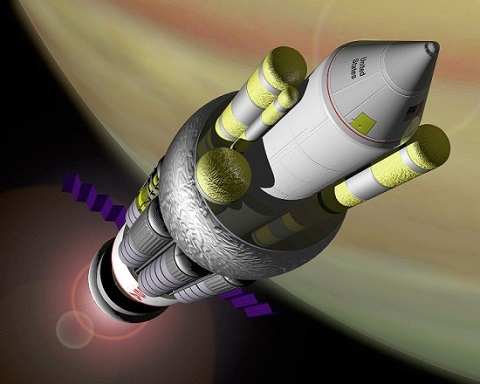
Project Orion starship
Project Orion
Project Orion was the first serious attempt to design a nuclear pulse rocket. The design effort was carried out at General Atomics in the late 1950s and early 1960s. The idea of Orion was to react small directional nuclear explosives against a large steel pusher plate attached to the spacecraft with shock absorbers. Efficient directional explosives maximized the momentum transfer, leading to specific impulses in the range of 6,000 seconds, or about 12 times that of the Space Shuttle Main Engine. With refinements, a theoretical maximum of 100,000 seconds (1 MN·s/kg) might be possible. Thrusts were in the millions of tons, allowing spacecraft larger than eight million tons to be built with 1958 materials.
The reference design was to be constructed of steel using submarine-style construction, with a crew of more than 200 and a vehicle takeoff weight of several thousand tons. This low-tech single-stage reference design would reach Mars and back in four weeks from the Earth's surface (compared to ≈50 weeks for NASA's current chemically powered reference mission). The same craft could visit Saturn's moons in a seven-month mission (compared to chemically powered missions of about nine years).
A number of engineering problems were found, and solved, over the course of the project. Many of these related to crew shielding and pusher-plate lifetime. The system appeared to be entirely workable, and was under serious development in the United States, when the project was shut down in 1965. The primary reason given was that the Partial Test Ban Treaty made it illegal to detonate nuclear explosions in space (before the treaty, the United States and the Soviet Union had already detonated at least nine nuclear bombs, including thermonuclear bombs, in space; i.e., at altitudes over 100 km).
There were also ethical issues that would be associated with launching such a vehicle from within the earth's magnetosphere. Calculations showed that the fallout from a takeoff could be projected to lead to the premature death of between 1 and 10 people. Thus, this project would be entirely feasible if the ship were launched from outside the magnetosphere-the only remaining difficulty being, of course, transporting everything to the launch point.
One useful mission for this technology near-term would be to deflect an asteroid that could collide with the earth, which was depicted dramatically in the 1998 film Deep Impact (in which the author appeared as an extra). The extremely high performance would permit even a late launch to succeed, and the vehicle could effectively transfer a large amount of kinetic energy to the asteroid by simple impact-in the event of an imminent asteroid impact, the theorized effect of health effects from fallout would probably not be considered prohibitive. An automated, one-way mission would eliminate the most problematic issue of the design: the shock absorbers.
Orion is an example of an interstellar space drive that could theoretically be constructed- with available technology .
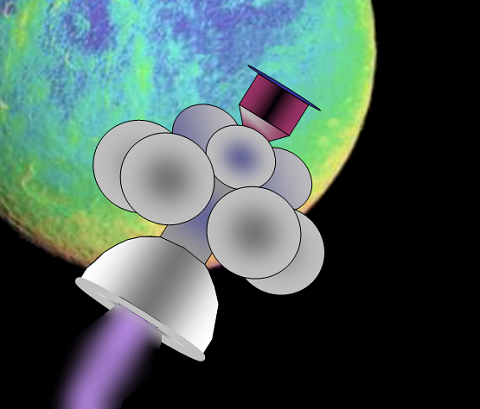
Project Daedalus
Project Daedalus was a study conducted between 1973 and 1978 by the British Interplanetary Society (BIS). The objective was to design a plausible interstellar spacecraft that could reach Alpha Centauri in roughly 45 years, resulting in a velocity of about 10 percent of the speed of light. A dozen scientists and engineers worked on the project. At the time, fusion research appeared to be making great strides, and in particular, inertial confinement fusion (ICF) appeared to be adaptable as a rocket engine.
ICF uses small pellets of fusion fuel, typically lithium deuteride ( 6 Li 2 H), with a small deuterium/tritium trigger at the center. The pellets are thrown into a reaction chamber where they are hit on all sides by lasers or another form of beamed energy. The heat generated by the beams explosively compresses the pellet, to the point where fusion takes place. The result is a hot plasma, and a very small "explosion" (compared to using a fission "bomb" to compress and heat the fusion fuel, as in a thermonuclear bomb).
For Daedalus, this process was run within a large electromagnet that formed the rocket engine. After the reaction, which was ignited by electron beams, the magnet funneled the hot gas to the rear for thrust. Some of the energy was diverted to run the ship's systems and engine. In order to make the system safe and energy efficient, Daedalus was to be powered by Helium-3 fuel that would be mined from the atmosphere of Jupiter.
Currently, designing an ICF system efficient enough for a Daedalus design remains considerably beyond our technical capabilities. Some designs, however, are on the drawing board awaiting confirmation.

Bussard ramjet
Bussard Ramjet
The noted physicist Robert W. Bussard in 1960 proposed a fascinating method of space propulsion capable of advanced interstellar spaceflight. This variant of a fusion rocket uses enormous electromagnetic fields as a "scoop" to collect and compress hydrogen from interstellar space. High speeds force the reactive mass into a progressively constricted magnetic field, compressing it until thermonuclear fusion occurs. The magnetic field then directs the energy as rocket exhaust, thereby accelerating the vessel.
In deep space, there is only one hydrogen atom for every 10 cubic centimeters of space. This means that the frontal scoop would need to be hundreds of kilometers across to scoop enough hydrogen atoms to funnel through to the reactor. Also, at ship speeds close to the speed of light, these atoms are traveling at the same relativistic speeds; the resulting cosmic rays would effectively fry the ship's passengers. To counter this, Bussard proposed ionizing these atoms at a safe distance using a laser beam, and using a powerful magnetic field to funnel the ionized atoms into the ship, bypassing the ship's hull.
There is an amazing characteristic of such a ship, assuming the highly advanced engineering and construction can someday be accomplished and the proposed fusion drive can be brought into existence. Let's assume a constant acceleration of 1g during the first half of the ship's journey, whereupon the ship decelerates to its destination at the same 1g for the comfort of all aboard. The resulting velocity of the ship for most of the journey would be very close to the speed of light. This would mean that the relativistic effects of time dilation come into play for the passengers.
For such a hypothetical voyage, Barnard's Star-six light-years away-could be reached in a little under eight years, ship time. For longer voyages, even the center of our Milky Way galaxy could be reached in just 21 years. As Sagan said, traveling fast into space means traveling fast into the future-because those left behind on earth during such a hypothetical journey would perceive things very much differently. For them, millions of years would have passed. Relativistic travels make distant interstellar space travel feasible-but only for those on board the voyage.
In subsequent installments in this series, the history, science, and technology of these and other space nuclear propulsion projects will be explored in depth. Stay tuned.
________________________

Related Articles
The SNAP-10A reactor power system
Systems for Nuclear Auxiliary Power (SNAP) was an Atomic Energy Commission program with the goal of producing a portable and dependable power source centered around nuclear technology that...
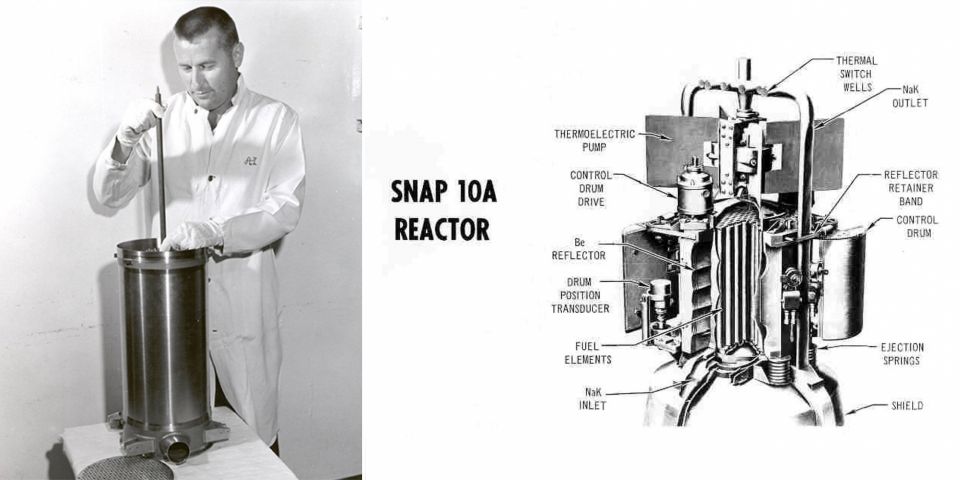
New modeling of nuclear device to deflect or destroy asteroids en route to Earth
The same high energy density that makes nuclear energy a clean and efficient source of power could make it a good alternative to defend the planet against catastrophic asteroid impacts. NASA...
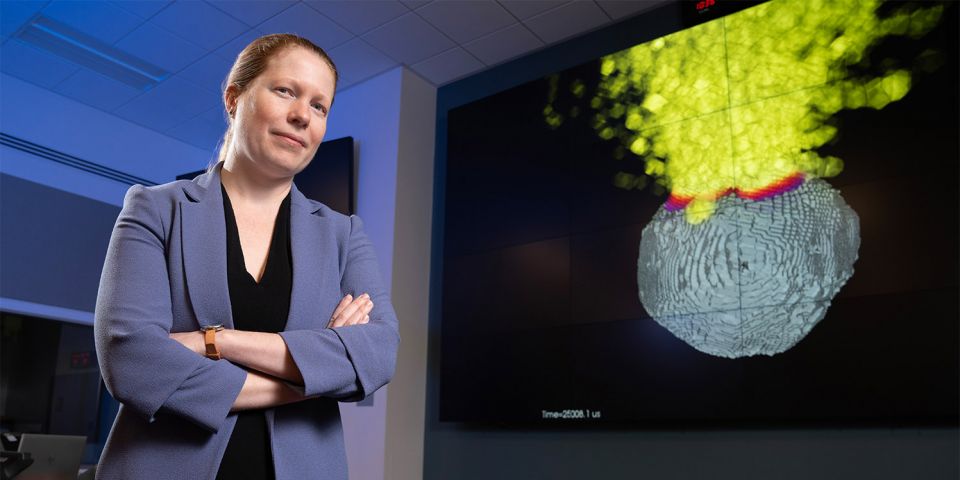
DARPA’s nuclear rocket demo gets a boost from NASA’s Mars ambitions
NASA and the Defense Advanced Research Projects Agency (DARPA) have announced they will collaborate on plans to launch and test DARPA’s Demonstration Rocket for Agile Cislunar Operations...
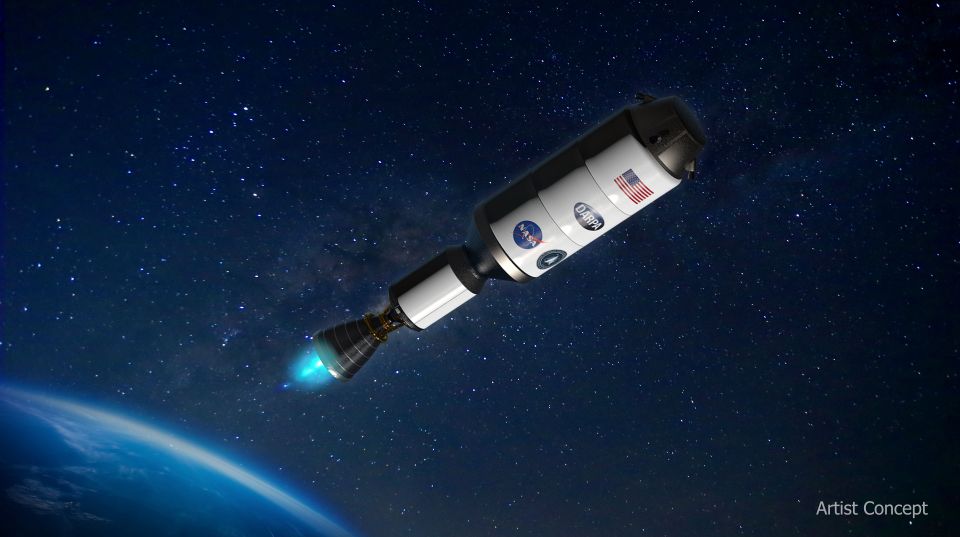
Countdown to fission on the moon: Candidate designs wanted
NASA and Idaho National Laboratory have just opened a competitive solicitation for U.S. nuclear and space industry leaders to develop innovative technologies for a fission surface power system...
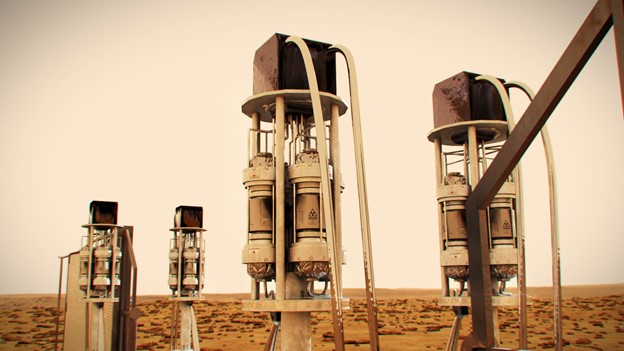
Trump leaves space nuclear policy executive order for Biden team
Among the executive orders President Trump issued during his last weeks in office was “Promoting Small Modular Reactors for National Defense and Space Exploration,” which builds on the...
New U.S. space nuclear policy released
A national strategy for the responsible and effective use of space nuclear power and propulsion (SNPP)—Space Policy Directive-6 (SPD-6)—was released by the White House on December 16 as a...
NASA work on lattice confinement fusion grabs attention
An article recently published on the IEEE Energywise blog heralds “Spacecraft of the Future,” which could be powered by lattice confinement fusion. While lattice confinement fusion is not...
One small step for fission—on the Moon and beyond
A reliable energy source is critical for long-duration space exploration. NASA, targeting launch readiness by the end of 2026, has teamed up with the Department of Energy and Idaho National...
Why Nuclear is an Emerging Technology for the Space Economy
Nuclear energy has played a key supporting role in historic missions to Mars, Pluto, and across the Solar System for the last 50 years. On January 1 2019, the nuclear-powered New Horizons flew...
Are the Tides Turning for Advanced U.S. Nuclear?
Welcome to the New Year! Even though I am on the road, there is just so much happening lately in nuclear I could not pass up the opportunity to talk about it! This episode of RadioNuclear,...

- Engineering & Transportation
- Engineering

Enjoy fast, free delivery, exclusive deals, and award-winning movies & TV shows with Prime Try Prime and start saving today with fast, free delivery
Amazon Prime includes:
Fast, FREE Delivery is available to Prime members. To join, select "Try Amazon Prime and start saving today with Fast, FREE Delivery" below the Add to Cart button.
- Cardmembers earn 5% Back at Amazon.com with a Prime Credit Card.
- Unlimited Free Two-Day Delivery
- Streaming of thousands of movies and TV shows with limited ads on Prime Video.
- A Kindle book to borrow for free each month - with no due dates
- Listen to over 2 million songs and hundreds of playlists
- Unlimited photo storage with anywhere access
Important: Your credit card will NOT be charged when you start your free trial or if you cancel during the trial period. If you're happy with Amazon Prime, do nothing. At the end of the free trial, your membership will automatically upgrade to a monthly membership.
Return this item for free
We offer easy, convenient returns with at least one free return option: no shipping charges. All returns must comply with our returns policy.
- Go to your orders and start the return
- Select your preferred free shipping option
- Drop off and leave!

Download the free Kindle app and start reading Kindle books instantly on your smartphone, tablet, or computer - no Kindle device required .
Read instantly on your browser with Kindle for Web.
Using your mobile phone camera - scan the code below and download the Kindle app.

Image Unavailable
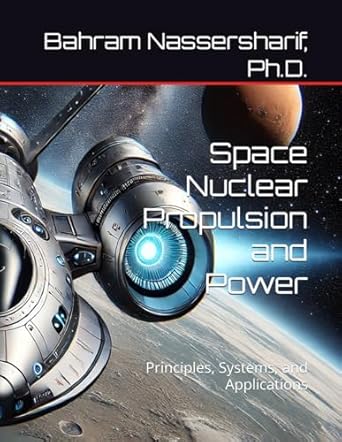
- To view this video download Flash Player

Space Nuclear Propulsion and Power: Principles, Systems, and Applications
Purchase options and add-ons.
- ISBN-13 979-8335377485
- Publication date August 8, 2024
- Language English
- Dimensions 8.5 x 1.28 x 11 inches
- Print length 568 pages
- See all details
Frequently bought together
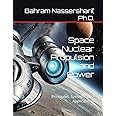
Customers who bought this item also bought
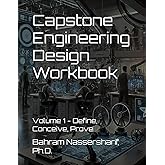
Product details
- ASIN : B0DCN88RW5
- Publisher : Independently published (August 8, 2024)
- Language : English
- Paperback : 568 pages
- ISBN-13 : 979-8335377485
- Item Weight : 2.87 pounds
- Dimensions : 8.5 x 1.28 x 11 inches
- #142 in Mechanical Engineering (Books)
Customer reviews
- 5 star 4 star 3 star 2 star 1 star 5 star 0% 0% 0% 0% 0% 0%
- 5 star 4 star 3 star 2 star 1 star 4 star 0% 0% 0% 0% 0% 0%
- 5 star 4 star 3 star 2 star 1 star 3 star 0% 0% 0% 0% 0% 0%
- 5 star 4 star 3 star 2 star 1 star 2 star 0% 0% 0% 0% 0% 0%
- 5 star 4 star 3 star 2 star 1 star 1 star 0% 0% 0% 0% 0% 0%
Customer Reviews, including Product Star Ratings help customers to learn more about the product and decide whether it is the right product for them.
To calculate the overall star rating and percentage breakdown by star, we don’t use a simple average. Instead, our system considers things like how recent a review is and if the reviewer bought the item on Amazon. It also analyzed reviews to verify trustworthiness.
No customer reviews
- Amazon Newsletter
- About Amazon
- Accessibility
- Sustainability
- Press Center
- Investor Relations
- Amazon Devices
- Amazon Science
- Sell on Amazon
- Sell apps on Amazon
- Supply to Amazon
- Protect & Build Your Brand
- Become an Affiliate
- Become a Delivery Driver
- Start a Package Delivery Business
- Advertise Your Products
- Self-Publish with Us
- Become an Amazon Hub Partner
- › See More Ways to Make Money
- Amazon Visa
- Amazon Store Card
- Amazon Secured Card
- Amazon Business Card
- Shop with Points
- Credit Card Marketplace
- Reload Your Balance
- Amazon Currency Converter
- Your Account
- Your Orders
- Shipping Rates & Policies
- Amazon Prime
- Returns & Replacements
- Manage Your Content and Devices
- Recalls and Product Safety Alerts
- Registry & Gift List
- Conditions of Use
- Privacy Notice
- Consumer Health Data Privacy Disclosure
- Your Ads Privacy Choices

Doodle to reality: World’s 1st nuclear fusion-powered electric propulsion drive
A concept that began as a doodle at a conference years ago is now becoming a reality.
RocketStar Inc. has showcased its advanced nuclear-based propulsion technology called the FireStar Drive.
It is said to be the world’s first electric device for spacecraft propulsion boosted by nuclear fusion .
Recently, the company announced the successful initial demonstration of this electric propulsion technology.
“We are thrilled at the results of our initial testing on an idea that our team has been exploring for some time,” said Chris Craddock, CEO of RocketStar, a US-based aerospace company.
The demand for nuclear fusion thrusters in space exploration and satellite deployment is expected to increase in the coming years. This is due to the technique’s increased efficiency, extended operation times, and other advantages.
Nuclear technique used by the thruster
The FireStar Drive harnesses the power of nuclear fusion to improve the performance of RocketStar’s “water-fueled pulsed plasma thruster.”
A spacecraft’s thrusters perform various functions, including propulsion , orbital changes, and even docking with other orbiting platforms.
Moreover, the device employs a unique sort of aneutronic nuclear fusion, which is a fusion reaction that generates few to no neutrons as a byproduct.
“The base thruster generates high-speed protons through the ionization of water vapor,” noted the press release.
Therefore, these protons collide with the nucleus of a boron atom, which starts the fusion reaction.
The FireStar Drive begins a fusion process by adding boron into the thruster exhaust, resulting in high-energy particles that increase thrust.
Nuclear fusion validation
For the testing, the team added boronated water into the exhaust plume of a pulsed plasma thruster during a Small Business Innovation Research (SBIR) Phase 1 project for AFWERX.
“This created alpha particles and gamma rays, clear indications of nuclear fusion,” noted the release.
The discovery was further confirmed and validated during the SBIR Phase 2 project at Georgia Tech’s High Power Electric Propulsion Laboratory (HPEPL) in Atlanta, Georgia.
Moreover, the technique produced ionizing radiation and increased the base propulsion unit’s thrust by 50%.
“RocketStar has not just incrementally improved a propulsion system, but has taken a leap forward by applying a novel concept, creating a fusion-fission reaction in the exhaust,” said Adam Hecht, Professor of Nuclear Engineering at the University of New Mexico.
“This is an exciting time in technology development, and I am looking forward to their future innovations,” added Hecht.

In-space testing
RocketStar’s current thruster is dubbed M1.5. Plans to test the FireStar Drive are now ongoing.
The in-space technological demonstration will take place aboard D-Orbit’s patented OTV ION Satellite Carrier. The SpaceX Transporter rideshare mission will likely launch the demo test in July and October 2024.
“We are very happy to have the opportunity to work alongside RocketStar and contribute to the demonstration of the M1.5,” said Matteo Lorenzoni, Head of Sales at D-Orbit.
“We just integrated the thruster onto the ION Satellite Carrier, and look forward to witnessing its performance in orbit,” Lorenzoni added in the press release.
Furthermore, the team plans to undertake ground tests this year, with more in-space demonstrations scheduled for February 2025.
The FireStar Drive will undergo testing as a payload aboard Rogue Space System’s Barry-2 spacecraft in the same month.
The thruster M1.5 is already ready for delivery to clients.

SpaceX to return Boeing's Starliner astronauts from space next year, NASA says
By joey roulette, reuters | updated - aug. 24, 2024 at 4:49 p.m. | posted - aug. 24, 2024 at 3:52 p.m., nasa astronauts butch wilmore and suni williams pose ahead of the launch of boeing's starliner-1 crew flight test, in cape canaveral, fla., april 25. the two will return to earth on a spacex vehicle early next year. (joe skipper, reuters).
Estimated read time: 4-5 minutes
WASHINGTON — Two NASA astronauts who flew to the International Space Station in June aboard Boeing's faulty Starliner capsule will need to return to Earth on a SpaceX vehicle early next year, NASA officials said on Saturday, deeming issues with Starliner's propulsion system too risky to carry its first crew home as planned.
Veteran NASA astronauts Butch Wilmore and Suni Williams, both former military test pilots, became the first crew to ride Starliner on June 5 when they were launched to the ISS for what was expected to be an eight-day test mission.
But Starliner's propulsion system suffered a series of glitches in the first 24 hours of its flight to the ISS that has so far kept the astronauts on the station for 79 days as Boeing scrambled to investigate the issues.
NASA officials told reporters during a news conference in Houston that Wilmore and Williams are safe and prepared to stay even longer. They will use their extra time to conduct science experiments alongside the station's other seven astronauts, NASA said.
In a rare reshuffling of NASA's astronaut operations, the two astronauts are now expected to return in February 2025 on a SpaceX Crew Dragon spacecraft due to launch next month as part of a routine astronaut rotation mission. Two of the Crew Dragon's four astronaut seats will be kept empty for Wilmore and Williams.
The agency's decision, tapping Boeing's top space rival to return the astronauts, is one of NASA's most consequential in years. Boeing had hoped its Starliner test mission would redeem the troubled program after years of development problems and over $1.6 billion in budget overruns since 2016.
'Not the decision we had hoped for'
Five of Starliner's 28 thrusters failed during flight and it sprang several leaks of helium, which is used to pressurize the thrusters. It was still able to dock with the station, a football field-sized laboratory that has housed rotating crews of astronauts for over two decades.
NASA said in a statement Starliner will undock from the space station without a crew in "early September." The spacecraft will attempt to return to Earth autonomously, forgoing a core test objective of having a crew present and in control for the return trip.
"I know this is not the decision we had hoped for, but we stand ready to carry out the action's necessary to support NASA's decision," Boeing's Starliner chief Mark Nappi told employees in an email.
"The focus remains first and foremost on ensuring the safety of the crew and spacecraft," Nappi said.
Several senior NASA officials and Boeing representatives made the decision during a Saturday morning meeting in Houston.
NASA's space operations chief Ken Bowersox said agency officials unanimously voted for Crew Dragon to bring the astronauts home. Boeing voted for Starliner, which it said was safe.
Nelson told reporters at a news conference in Houston that he discussed the agency's decision with Boeing's new CEO Kelly Ortberg and was confident Boeing would continue its Starliner program. Nelson said he was "100 percent" certain the spacecraft would fly another crew in the future.
"He expressed to me an intention that they will continue to work the problems once Starliner is back safely," Nelson said of Ortberg.
'Too much uncertainty'
Boeing struggled for years to develop Starliner, a gumdrop-shaped capsule designed to compete with Crew Dragon as a second U.S. option for sending astronaut crews to and from Earth's orbit. The company is also struggling with quality issues in production of commercial planes, its most important products.
Starliner failed a 2019 test to launch to the space station without a crew aboard, but mostly succeeded in a 2022 do-over attempt where it also encountered thruster problems. Its June mission with its first crew was required before NASA can certify the capsule for routine flights, but now Starliner's crew certification path is uncertain.
The drawn-out mission has cost Boeing $125 million, securities filings show. The company arranged tests and simulations on Earth to gather data that it has used to try to convince NASA officials that Starliner is safe to fly the crew back home.
But results from that testing raised more difficult engineering questions and ultimately failed to quell NASA officials' concerns about Starliner's thrusters and its ability to make a crewed return trip, the most daunting and complex part of the test mission.
"There was just too much uncertainty in the prediction of the thrusters," NASA's commercial crew program chief Steve Stich told reporters.
Starliner's now-uncertain path to receiving a long-sought NASA certification will add to the crises faced by Ortberg, who started this month with the goal of rebuilding the plane maker's reputation after a door panel dramatically blew off a 737 MAX passenger jet in midair in January.
Related stories
Nasa delays return of boeing starliner for more technical checks, most recent science stories, perseverance rover is making a steep ascent to reach unexplored martian territory, utah studying idea of drones, air taxis being part of old prison site, 5 maintenance tips for your gas grill, related topics, more stories you may be interested in.

August's supermoon kicks off four months of lunar spectacles. Here's how to watch

Collapse of iconic arch has some wondering if other famous arches are also at risk

When and how to safely return Boeing Starliner crew still up in the air
Most viewed.
- High school football: Week 2 scores and schedule
- 3 Utahns drown in Sierra Nevada range whirlpool; community mourns loss of race director
- A 16-year-old is dead and a juvenile is in custody following a stabbing in a Sandy parking lot
- Utah parole board rescinds release date for repeat sexual offender after victim testimony
- Salt Lake man charged with kidnapping, sexually assaulting teen boy
- Search persists for woman swept away by flash flooding in the Grand Canyon
- Free COVID tests, treatments to return to help US cope over fall and winter, officials announce
- Ogden Valley, Spring Lake incorporation proposals go to voters in November
- Goshen woman charged in extortion case now linked to child kidnapping attempt in Vernal
- Wildfire causes homes to be evacuated along border of Tooele and Juab counties
STAY IN THE KNOW

KSL Weather Forecast


Suggested Searches
- Climate Change
- Expedition 64
- Mars perseverance
- SpaceX Crew-2
- International Space Station
- View All Topics A-Z
Humans in Space
Earth & climate, the solar system, the universe, aeronautics, learning resources, news & events.

FAQ: NASA’s Boeing Crew Flight Test Return Status
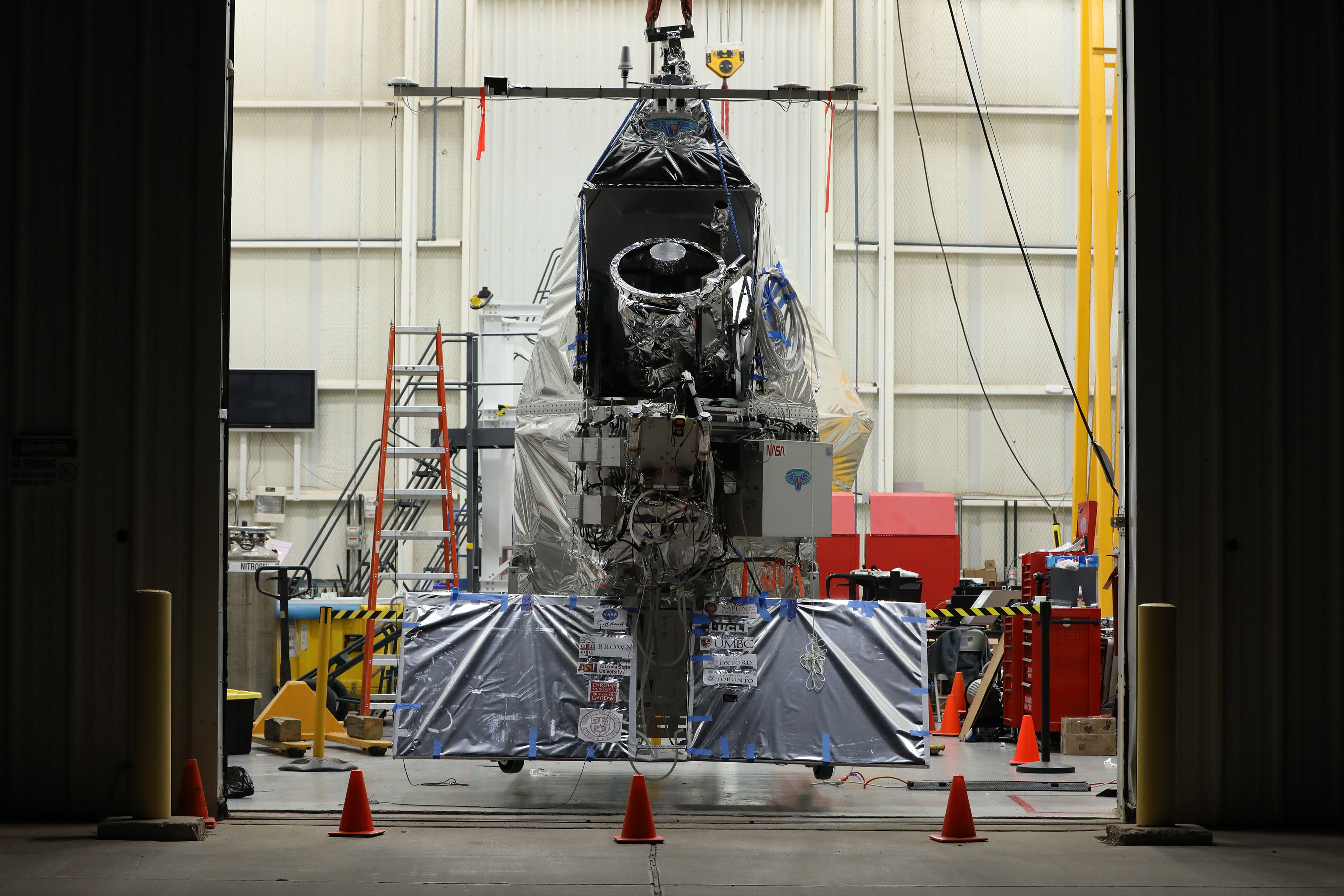
NASA’s EXCITE Mission Prepared for Scientific Balloon Flight
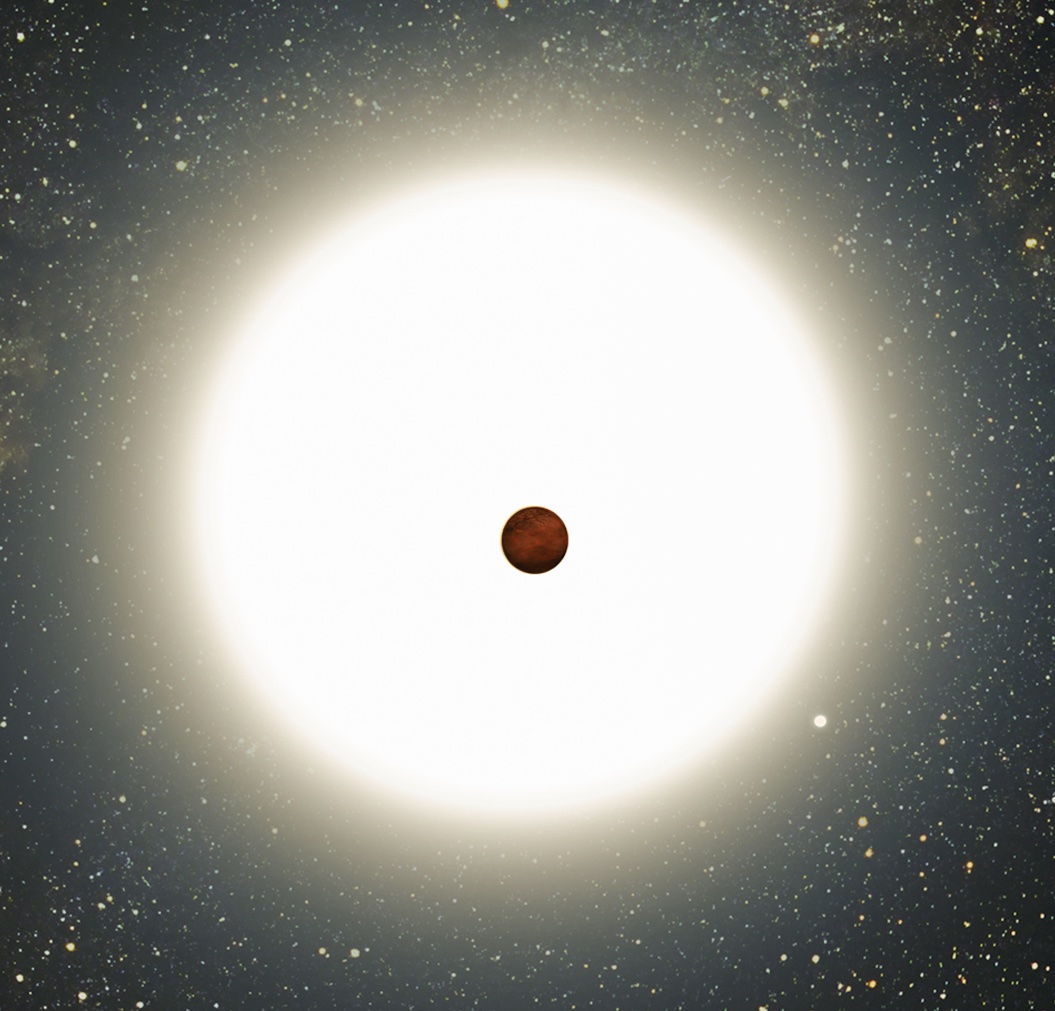
Talented Teams Tackle Toasty Planet
- Search All NASA Missions
- A to Z List of Missions
- Upcoming Launches and Landings
- Spaceships and Rockets
- Communicating with Missions
- James Webb Space Telescope
- Hubble Space Telescope
- Why Go to Space
- Commercial Space
- Destinations
- Living in Space
- Explore Earth Science
- Earth, Our Planet
- Earth Science in Action
- Earth Multimedia
- Earth Science Researchers
- Pluto & Dwarf Planets
- Asteroids, Comets & Meteors
- The Kuiper Belt
- The Oort Cloud
- Skywatching
- The Search for Life in the Universe
- Black Holes
- The Big Bang
- Dark Energy & Dark Matter
- Earth Science
- Planetary Science
- Astrophysics & Space Science
- The Sun & Heliophysics
- Biological & Physical Sciences
- Lunar Science
- Citizen Science
- Astromaterials
- Aeronautics Research
- Human Space Travel Research
- Science in the Air
- NASA Aircraft
- Flight Innovation
- Supersonic Flight
- Air Traffic Solutions
- Green Aviation Tech
- Drones & You
- Technology Transfer & Spinoffs
- Space Travel Technology
- Technology Living in Space
- Manufacturing and Materials
- Science Instruments
- For Kids and Students
- For Educators
- For Colleges and Universities
- For Professionals
- Science for Everyone
- Requests for Exhibits, Artifacts, or Speakers
- STEM Engagement at NASA
- NASA's Impacts
- Centers and Facilities
- Directorates
- Organizations
- People of NASA
- Internships
- Our History
- Doing Business with NASA
- Get Involved
NASA en Español
- Aeronáutica
- Ciencias Terrestres
- Sistema Solar
- All NASA News
- Video Series on NASA+
- Newsletters
- Social Media
- Media Resources
- Upcoming Launches & Landings
- Virtual Events
- Image of the Day
- Sounds and Ringtones
- Interactives
- STEM Multimedia
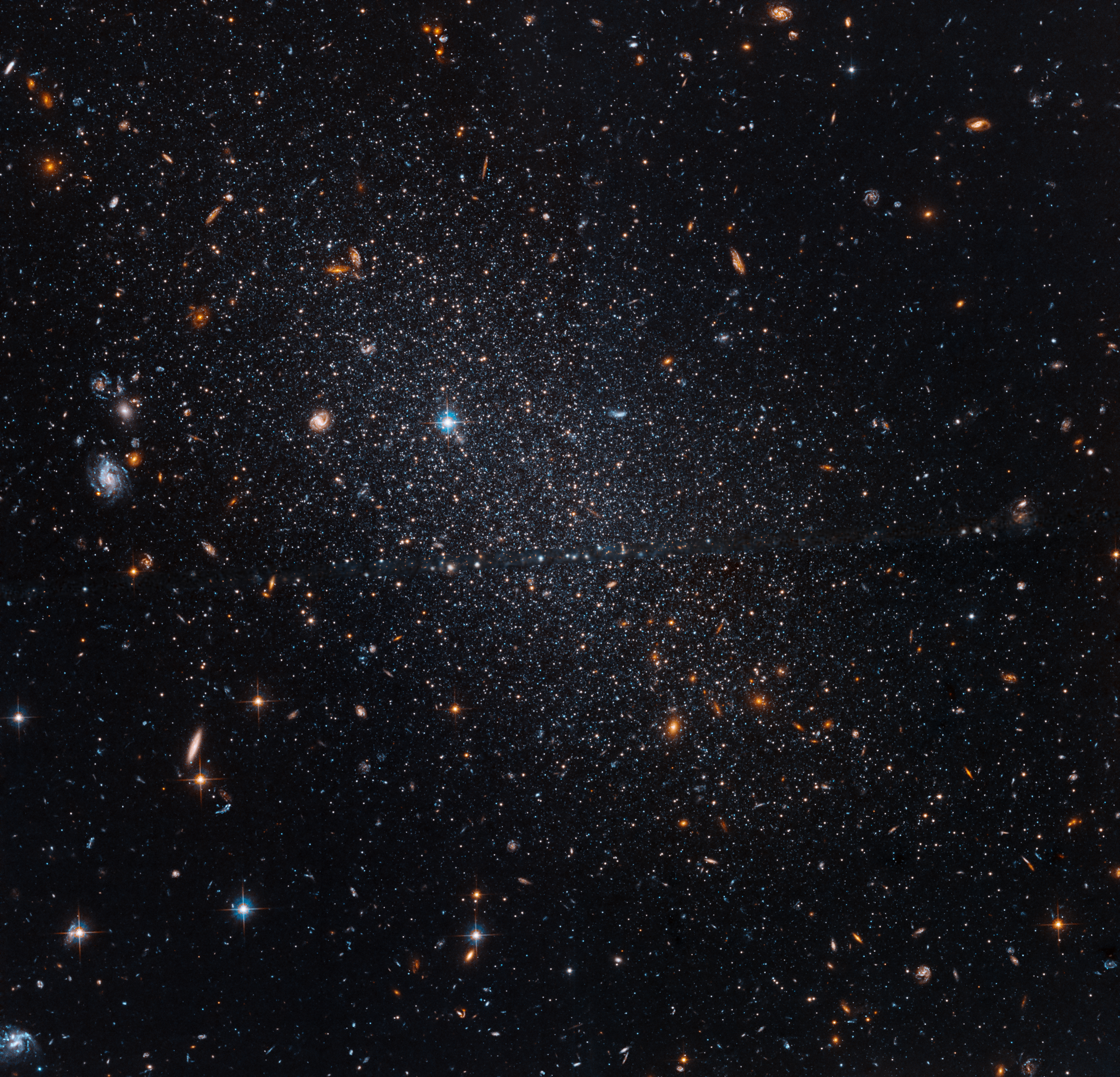
Hubble Reaches a Lonely Light in the Dark

NASA Funds Studies to Support Crew Performance on Long-Duration Missions
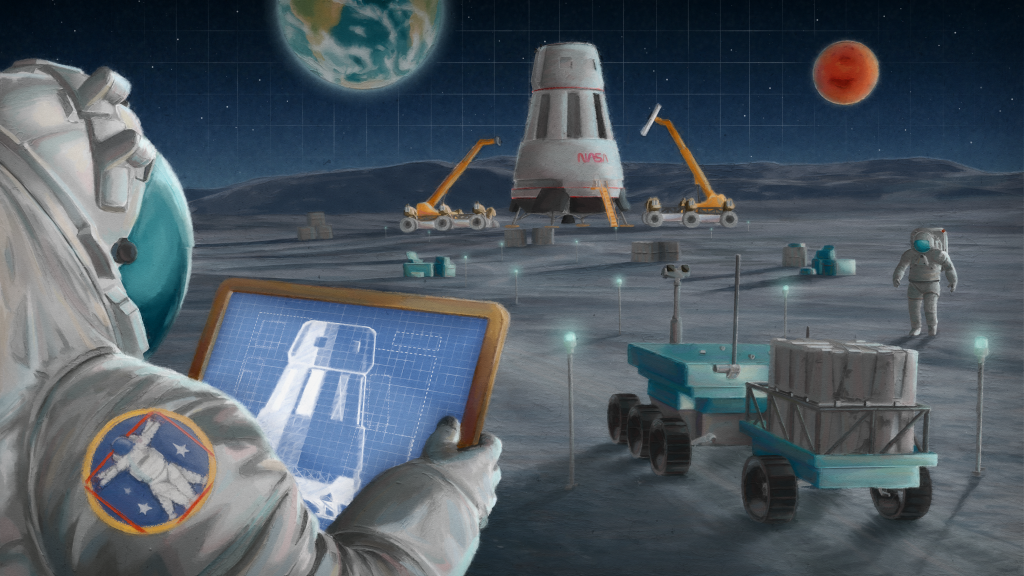
NextSTEP R: Lunar Logistics and Mobility Studies
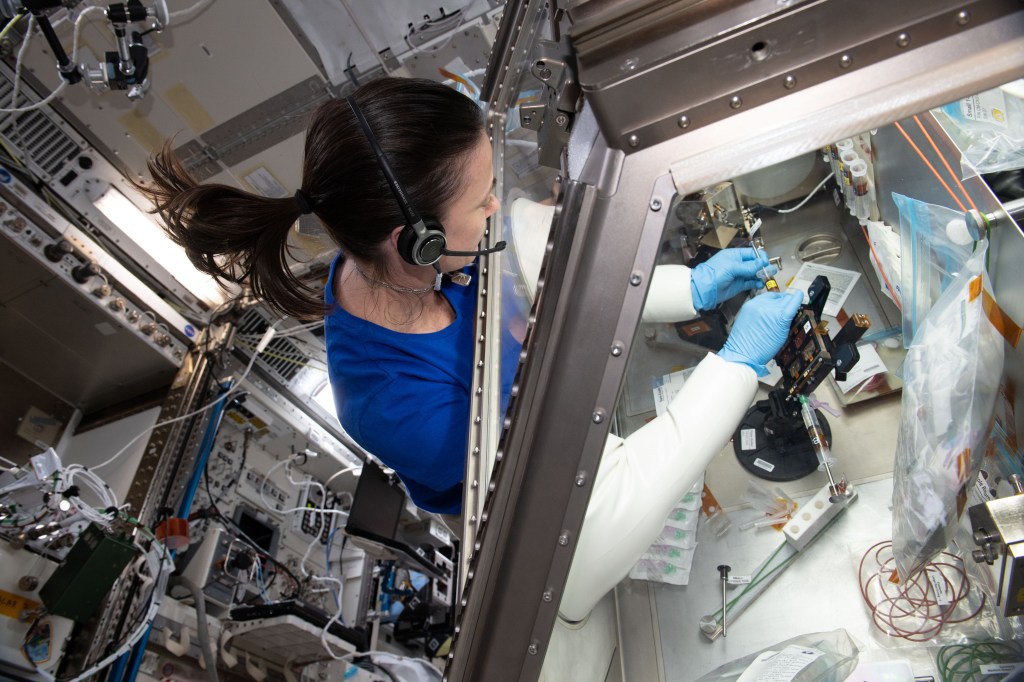
Station Science Top News: August 16, 2024
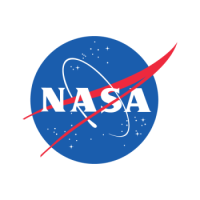
STV Precursor Coincident Datasets
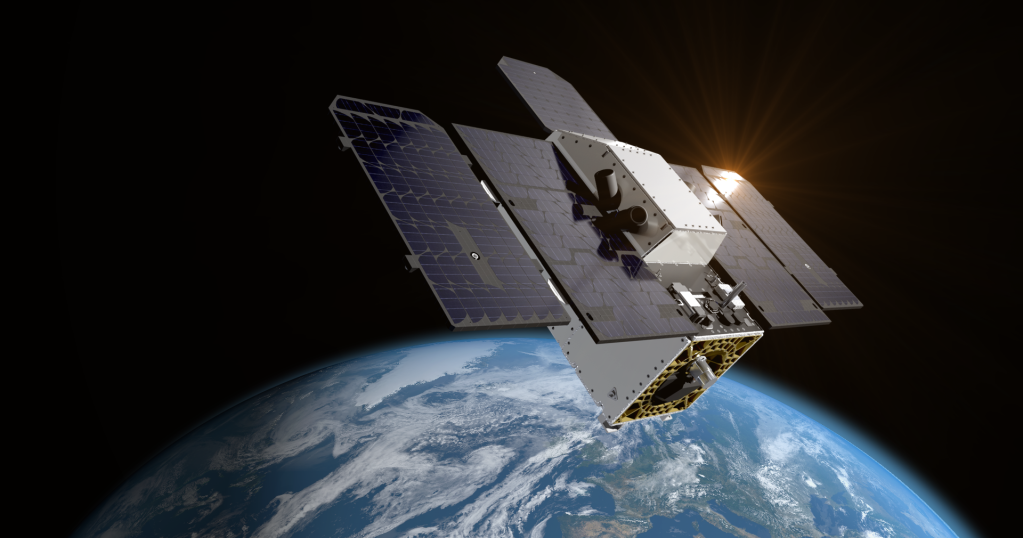
NASA-Designed Greenhouse Gas-Detection Instrument Launches

Airborne Surface, Cryosphere, Ecosystem, and Nearshore Topography
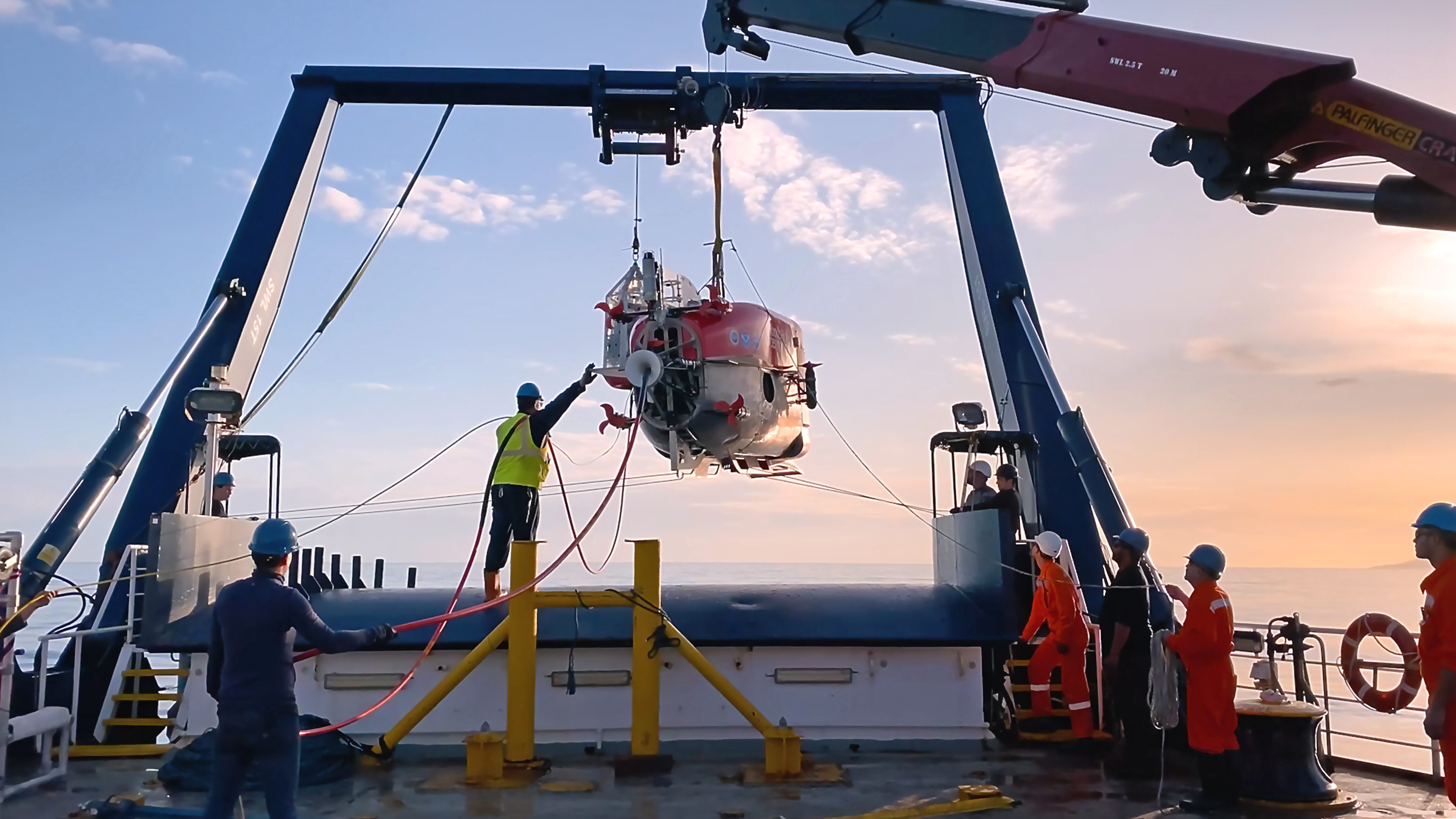
The Making of Our Alien Earth: The Undersea Volcanoes of Santorini, Greece

NASA Shares Asteroid Bennu Sample in Exchange with JAXA
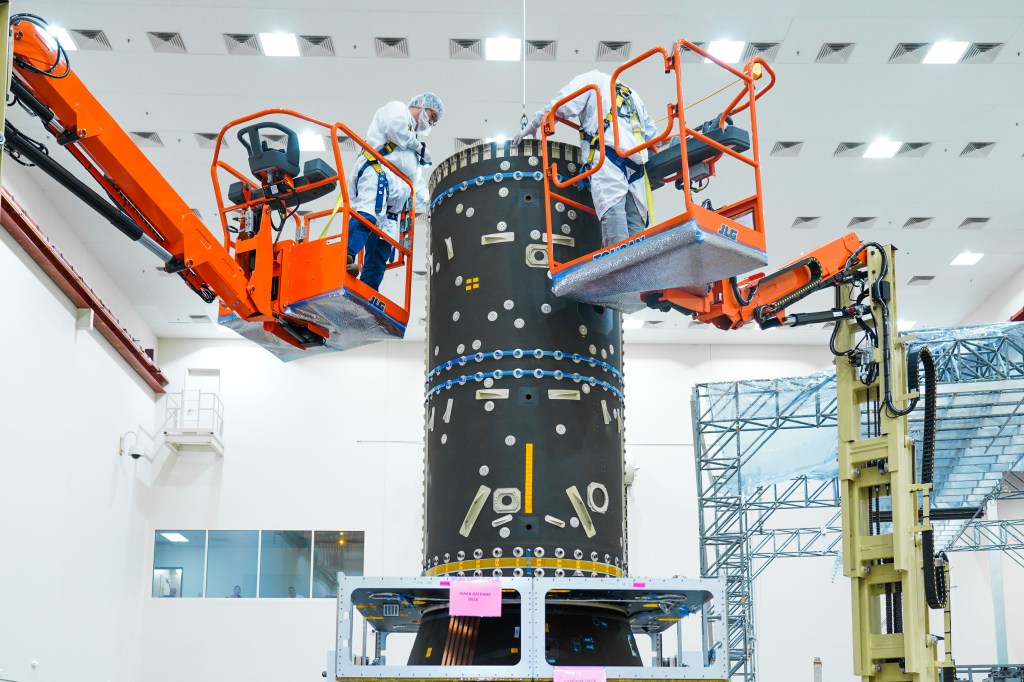
Gateway: Energizing Exploration

Hubble Finds Structure in an Unstructured Galaxy
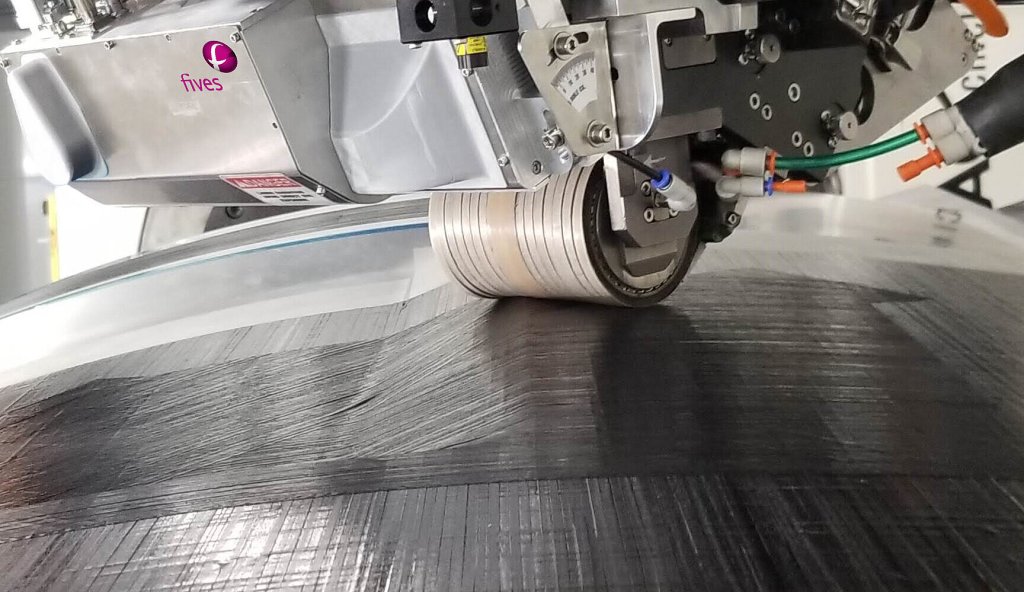
NASA Composite Manufacturing Initiative Gains Two New Members
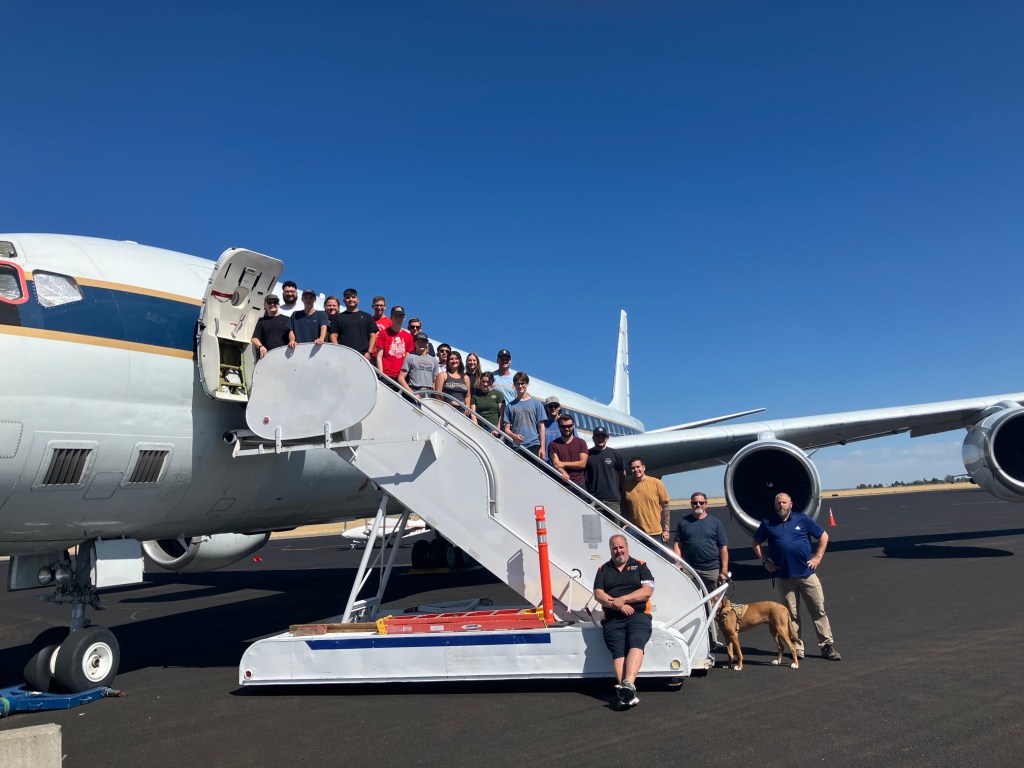
Beyond the Textbook: DC-8 Aircraft Inspires Students in Retirement

NASA Celebrates Ames’s Legacy of Research on National Aviation Day

Copernicus Trajectory Design and Optimization System
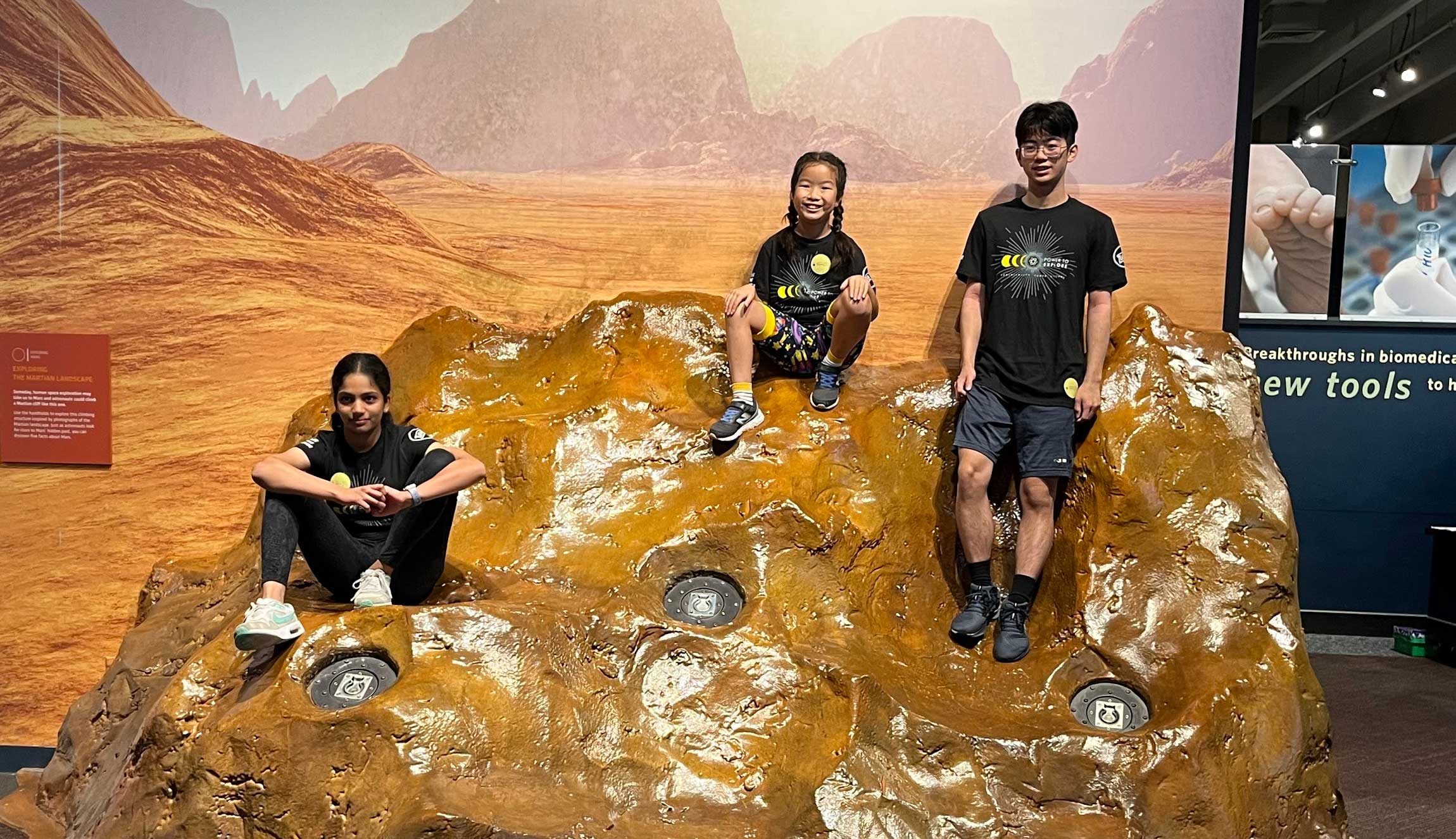
Perseverance Pays Off for Student Challenge Winners

How Do I Navigate NASA Learning Resources and Opportunities?
Preguntas frecuentes: estado del retorno de la prueba de vuelo tripulado boeing de la nasa.

Astronauta de la NASA Frank Rubio

Diez maneras en que los estudiantes pueden prepararse para ser astronautas
Nasa decides to bring starliner spacecraft back to earth without crew .
Jessica Taveau
Nasa headquarters.
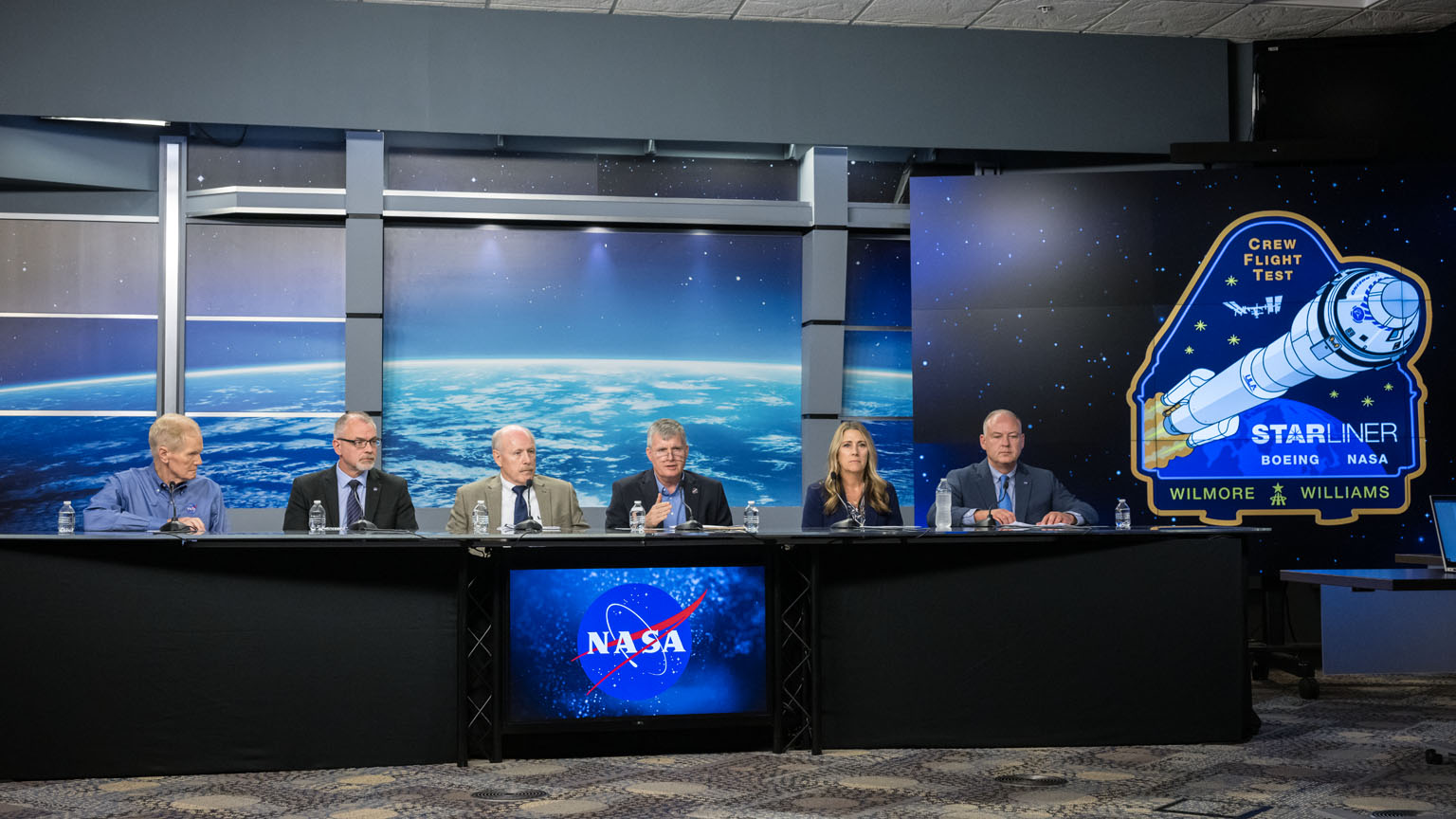
NASA will return Boeing’s Starliner to Earth without astronauts Butch Wilmore and Suni Williams aboard the spacecraft, the agency announced Saturday. The uncrewed return allows NASA and Boeing to continue gathering testing data on Starliner during its upcoming flight home, while also not accepting more risk than necessary for its crew.
Wilmore and Williams, who flew to the International Space Station in June aboard NASA’s Boeing Crew Flight Test, have been busy supporting station research, maintenance, and Starliner system testing and data analysis, among other activities.
“Spaceflight is risky, even at its safest and most routine. A test flight, by nature, is neither safe, nor routine. The decision to keep Butch and Suni aboard the International Space Station and bring Boeing’s Starliner home uncrewed is the result of our commitment to safety: our core value and our North Star,” said NASA Administrator Bill Nelson. “I’m grateful to both the NASA and Boeing teams for all their incredible and detailed work.”
Wilmore and Williams will continue their work formally as part of the Expedition 71/72 crew through February 2025. They will fly home aboard a Dragon spacecraft with two other crew members assigned to the agency’s SpaceX Crew-9 mission. Starliner is expected to depart from the space station and make a safe, controlled autonomous re-entry and landing in early September.
NASA and Boeing identified helium leaks and experienced issues with the spacecraft reaction control thrusters on June 6 as Starliner approached the space station. Since then, engineering teams have completed a significant amount of work , including reviewing a collection of data, conducting flight and ground testing, hosting independent reviews with agency propulsion experts, and developing various return contingency plans. The uncertainty and lack of expert concurrence does not meet the agency’s safety and performance requirements for human spaceflight, thus prompting NASA leadership to move the astronauts to the Crew-9 mission.
“Decisions like this are never easy, but I want to commend our NASA and Boeing teams for their thorough analysis, transparent discussions, and focus on safety during the Crew Flight Test,” said Ken Bowersox, associate administrator for NASA’s Space Operations Mission Directorate. “We’ve learned a lot about the spacecraft during its journey to the station and its docked operations. We also will continue to gather more data about Starliner during the uncrewed return and improve the system for future flights to the space station.”
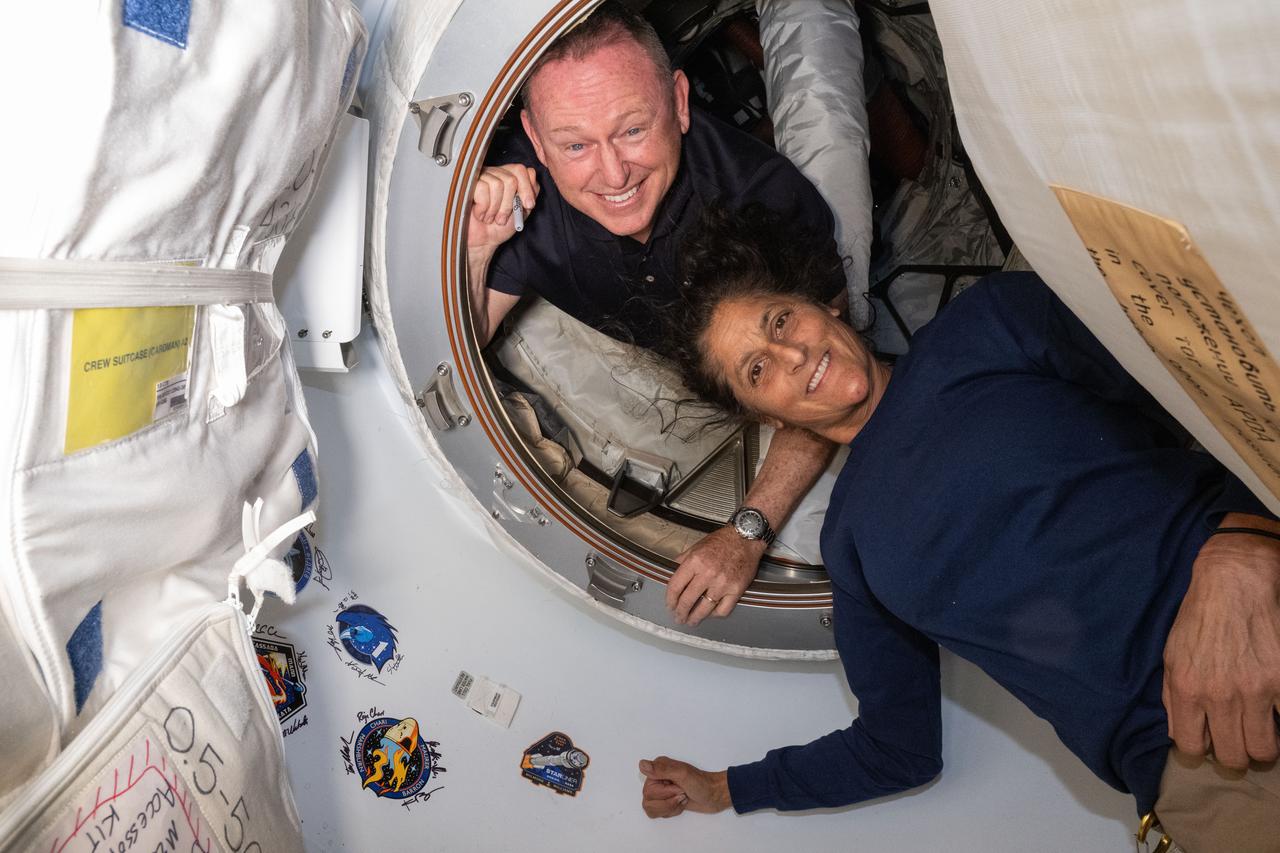
Starliner is designed to operate autonomously and previously completed two uncrewed flights. NASA and Boeing will work together to adjust end-of-mission planning and Starliner’s systems to set up for the uncrewed return in the coming weeks. Starliner must return to Earth before the Crew-9 mission launches to ensure a docking port is available on station.
“Starliner is a very capable spacecraft and, ultimately, this comes down to needing a higher level of certainty to perform a crewed return,” said Steve Stich, manager of NASA’s Commercial Crew Program. “The NASA and Boeing teams have completed a tremendous amount of testing and analysis, and this flight test is providing critical information on Starliner’s performance in space. Our efforts will help prepare for the uncrewed return and will greatly benefit future corrective actions for the spacecraft.”
NASA’s Commercial Crew Program requires spacecraft fly a crewed test flight to prove the system is ready for regular flights to and from the space station. Following Starliner’s return, the agency will review all mission-related data to inform what additional actions are required to meet NASA’s certification requirements.
The agency’s SpaceX Crew-9 mission, originally slated with four crew members , will launch no earlier than Tuesday, Sept. 24. The agency will share more information about the Crew-9 complement when details are finalized.
NASA and SpaceX currently are working several items before launch, including reconfiguring seats on the Crew-9 Dragon, and adjusting the manifest to carry additional cargo, personal effects, and Dragon-specific spacesuits for Wilmore and Williams. In addition, NASA and SpaceX now will use new facilities at Space Launch Complex-40 at Cape Canaveral Space Force Station in Florida to launch Crew-9, which provides increased operational flexibility around NASA’s planned Europa Clipper launch.
The Crew-9 mission will be the ninth rotational mission to the space station under NASA’s Commercial Crew Program, which works with the American aerospace industry to meet the goal of safe, reliable, and cost-effective transportation to and from the orbital outpost on American-made rockets and spacecraft launching from American soil.
For more than two decades, people have lived and worked continuously aboard the International Space Station, advancing scientific knowledge and demonstrating new technologies, making research breakthroughs not possible on Earth. The station is a critical testbed for NASA to understand and overcome the challenges of long-duration spaceflight and to expand commercial opportunities in low Earth orbit. As commercial companies focus on providing human space transportation services and destinations as part of a robust low Earth orbit economy , NASA’s Artemis campaign is underway at the Moon where the agency is preparing for future human exploration of Mars.
Find more information on NASA’s Commercial Crew Program at:
https://www.nasa.gov/commercialcrew
-end-
Meira Bernstein / Josh Finch Headquarters, Washington 202-358-1100 [email protected] / [email protected]
Steve Siceloff / Danielle Sempsrott / Stephanie Plucinsky Kennedy Space Center, Florida 321-867-2468 [email protected] / [email protected] / [email protected]
Leah Cheshier / Sandra Jones Johnson Space Center, Houston 281-483-5111 [email protected] / [email protected]
Related Terms
- Commercial Crew
- International Space Station (ISS)

IMAGES
COMMENTS
Space Nuclear Propulsion Space nuclear propulsion is a technology that draws energy from fission instead of traditional chemical reactions, thus providing virtually unlimited energy density and opening the door for crewed missions to Mars and deep space science. NASA is looking at two types of nuclear propulsion systems - thermal and electric.
Nuclear fusion has broad implications, fueling hopes of clean, limitless energy and the long-held dream of future rockets that are driven by nuclear propulsion.
Nuclear fusion propulsion technology has the potential to revolutionize space travel in terms of both speeds and fuel usage.
The path to higher thrust propulsion starts here. NASA has hired Lockheed Martin to design, build, and test a nuclear-powered rocket for space travel. The technology could speed up a manned trip ...
Spacecraft propulsion Rockets lifting off from Earth will depend on chemical fuels for the foreseeable future. However, once in orbit, nuclear engines could take over and provide propulsion to accelerate spacecraft through space. "Crewed interplanetary missions of the future will almost certainly require propulsion systems with performance levels greatly exceeding that of today's best ...
NASA and DARPA plan to launch a nuclear-powered spacecraft to Earth orbit in the next few years, to test propulsion technology that could get humanity to Mars.
Maturing faster, more efficient transportation technology will help NASA meet its Moon to Mars Objectives. Other benefits to space travel include increased science payload capacity and higher power for instrumentation and communication. In a nuclear thermal rocket engine, a fission reactor is used to generate extremely high temperatures.
Typically when the term "Nuclear Thermal Propulsion" (or NTP) is used, it is in reference to in-space propulsion systems that rely upon a low molecular weight (typically hydrogen) fuel that flows through a reactor to generate heat due to the nuclear fission processes and eventual thrust. A low molecular weight propellant is desirable ...
Nuclear thermal propulsion (NTP) systems aren't new, but they could significantly reduce travel times and carry greater payloads than today's top chemical rockets — giving humans a great chance of exploring deep space.
The use of nuclear thermal propulsion (NTP)1 and nuclear electric propulsion (NEP)2 systems on deep space science missions to the outer planets and into the interstellar medium3 can yield significant spacecraft system and mission performance benefits and improvements relative to the use of conventional chemical propulsion systems. Several recent and ongoing programs are developing the ...
The future of manned space exploration and development of space depends critically on the creation of a dramatically more proficient propulsion architecture for in-space transportation. A very persuasive reason for investigating the applicability of nuclear power in rockets is the vast energy density gain of nuclear fuel when compared to chemical combustion energy. Current nuclear fusion ...
Many different spacecraft propulsion systems have been proposed to give spacecraft the required speeds, including nuclear propulsion, beam-powered propulsion, and methods based on speculative physics. [ 2] Humanity would need to overcome considerable technological and economic challenges to achieve either crewed or uncrewed interstellar travel.
NASA and the U.S. Department of Energy have teamed up to fund three design concepts for reactors that could become part of a nuclear thermal propulsion system.
Florian Neukart introduces the Magnetic Fusion Plasma Drive, a revolutionary propulsion method combining fusion and ionic techniques. Offering immense energy density and numerous advantages, it could redefine space exploration, although challenges in sustaining fusion reactions in space remain. M
Nuclear power in space is the use of nuclear power in outer space, typically either small fission systems or radioactive decay for electricity or heat. Another use is for scientific observation, as in a Mössbauer spectrometer. The most common type is a radioisotope thermoelectric generator, which has been used on many space probes and on ...
Many aircraft carriers and submarines currently use uranium fueled nuclear reactors that can provide propulsion for long periods without refueling. There are also applications in the space sector with nuclear thermal and nuclear electric engines which could be more efficient than conventional rocket engines.
Why use a Nuclear Rocket Engine Over a Chemical Rocket Engine For astronauts to travel to Mars or any other place in the solar system in any practical sense propulsion systems more efficient than today 's best chemical rocket engines will be required (e.g. chemical engines are energy limited). Nuclear rocket engines, on the other hand, have no such constraints.
The use of nuclear thermal propulsion (NTP) 1 and nuclear electric propulsion (NEP) 2 systems on deep space science missions to the outer planets and into the interstellar medium 3 can yield significant spacecraft system and mission performance benefits and improvements relative to the use of conventional chemical propulsion systems.
Netflix's 3 Body Problem Reveals a Surprisingly Brilliant Mode of Space Travel The idea of space travel with parachutes and nuclear explosions will sound plenty familiar to NASA alum.
In this first of a series of articles on nuclear propulsion for space travel, allow me to enlighten each of you about the fascinating history of this technology. This post will cover three early projects, with posts to follow that will explore other technologies along with an assessment of future prospects.
Nuclear electric propulsion systems use propellants much more efficiently than chemical rockets but provide a low amount of thrust. They use a reactor to generate electricity that positively charges gas propellants like xenon or krypton, pushing the ions out through a thruster, which drives the spacecraft forward. Using low thrust efficiently, nuclear electric propulsion systems accelerate ...
th specific impulses that are closer to those observed in some electric propulsion systems. Consequently, NTP systems have the potential to greatly expand access to deep space and can enabl. a variety of missions that achieve the science goals outlined in NASA's decadal surveys. This paper leverages previous analysis performed to show the ...
I n what is a major breakthrough in the technology associated with space propulsion, RocketStar Inc. has powered up its advanced electric propulsion unit, FireStar Drive, using nuclear fusion for ...
Limitless Space Institute compares the travel time of spacecraft propelled by nuclear power to that of imaginative fusion propulsion. Credit: Limitless Space Institute Donald Trump's Arizona Crowd ...
Join the Journey to the Stars Whether you are a student or a seasoned professional, Space Nuclear Propulsion and Power offers valuable insights and guidance. Engage with the material, challenge presented concepts, and join the community advancing technologies that will shape space exploration's future and our understanding of the universe ...
The work on Nuclear Thermal Propulsion (NTP) is under the auspices of the Space Technology Mission Directorate's Game Changing Development Program. Today's advances in materials, testing capabilities, and reactor development are providing impetus for NASA to appraise Nuclear Thermal Propulsion (NTP) as an.
A concept that began as a doodle at a conference years ago is now becoming a reality. RocketStar Inc. has showcased its advanced nuclear-based propulsion technology called the FireStar Drive.
A more recent NASA trade study[2] concludes that "…the high ∆V required for fast Mars missions with short stay times drives the need for nuclear propulsion technology… past studies have shown that non-nuclear options require extremely aggressive technologies and concepts of operations to close a fast Mars mission.
Two NASA astronauts will need to return to Earth on a SpaceX vehicle early next year, NASA officials said on Saturday, deeming issues with Starliner's propulsion system too risky.
The Crew-9 mission will be the ninth rotational mission to the space station under NASA's Commercial Crew Program, which works with the American aerospace industry to meet the goal of safe, reliable, and cost-effective transportation to and from the orbital outpost on American-made rockets and spacecraft launching from American soil.